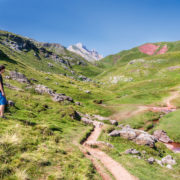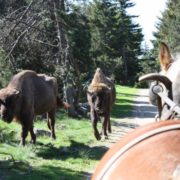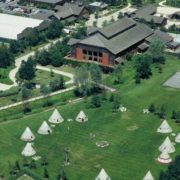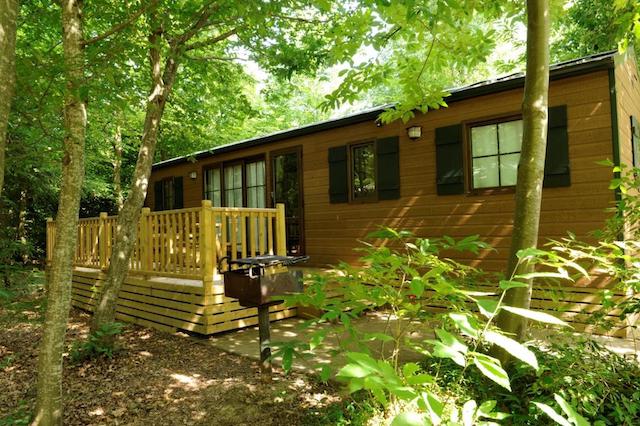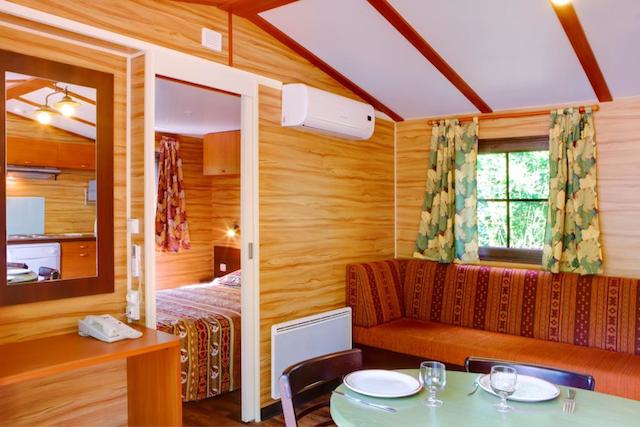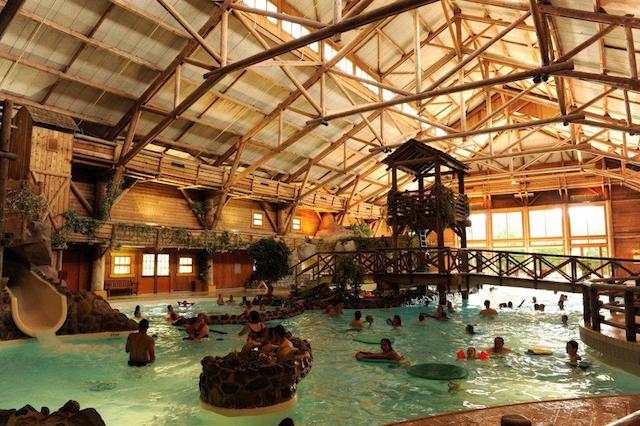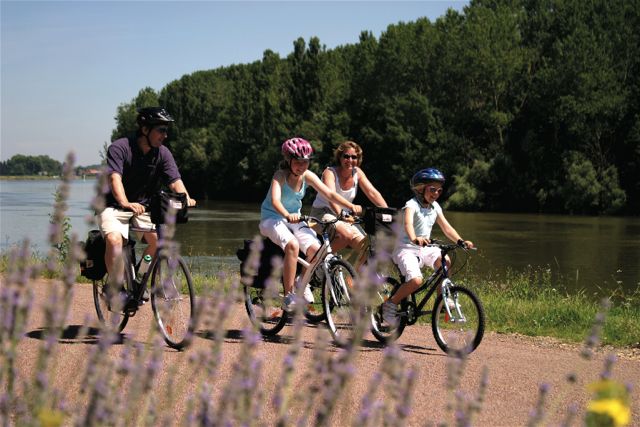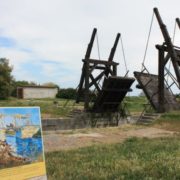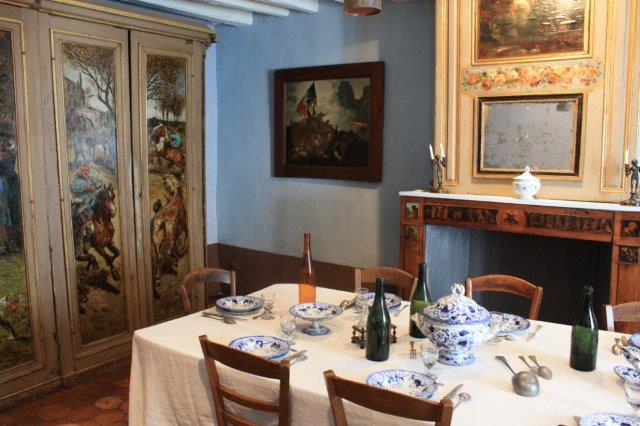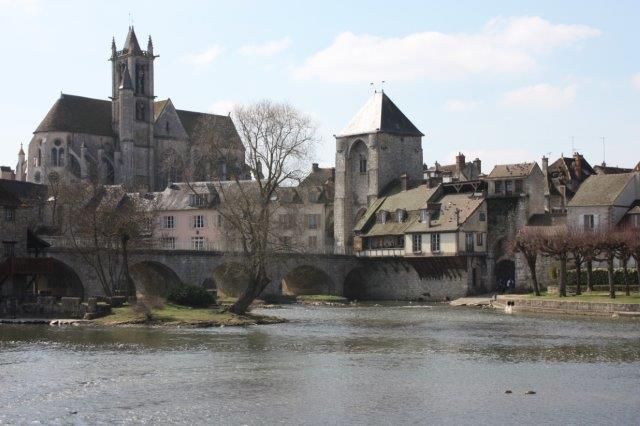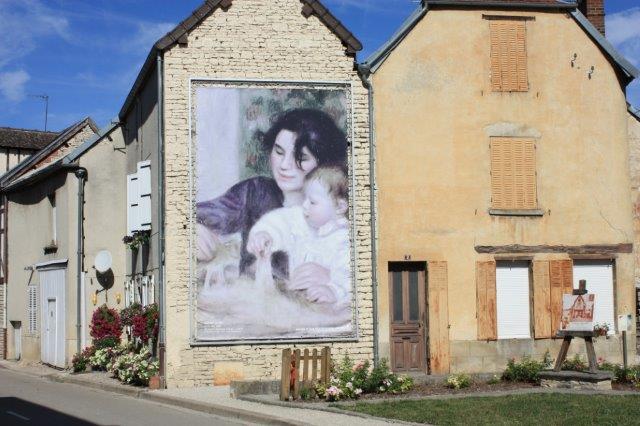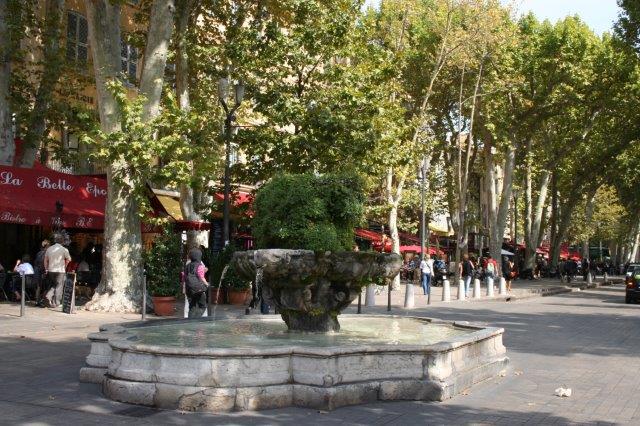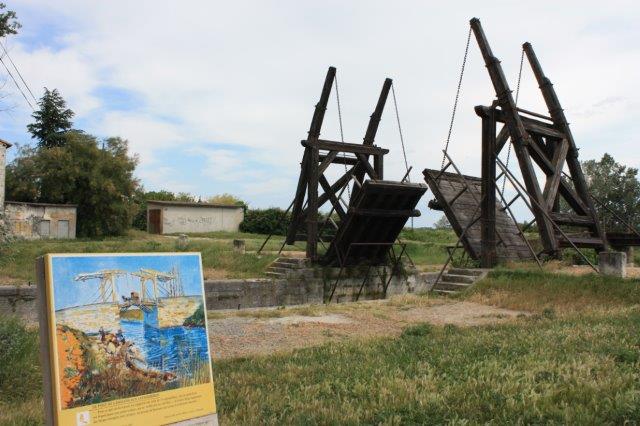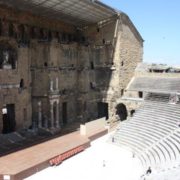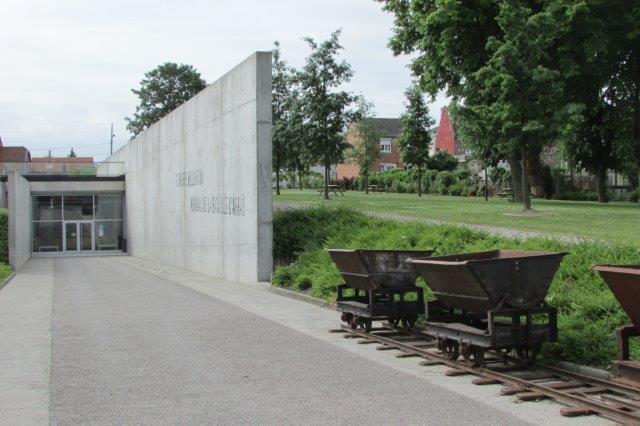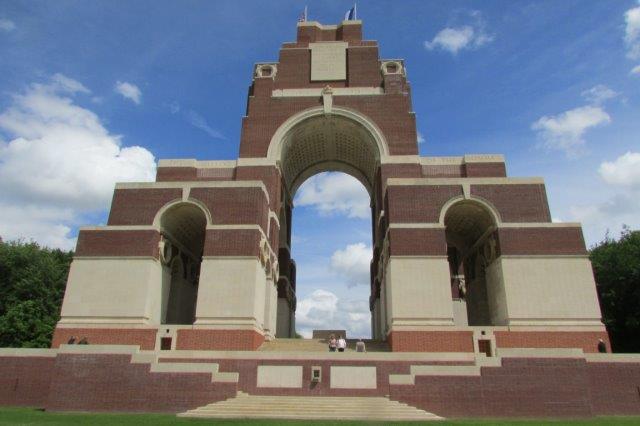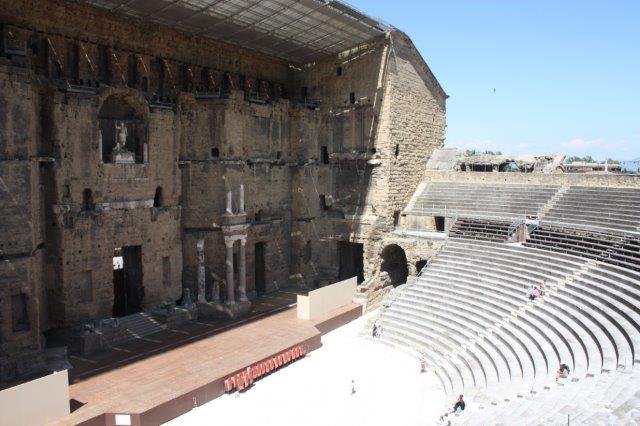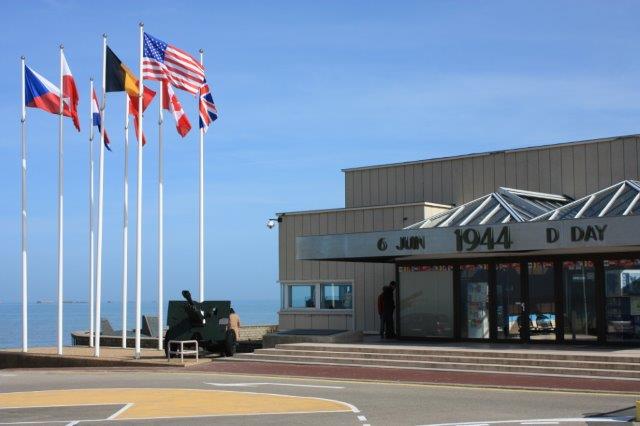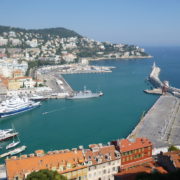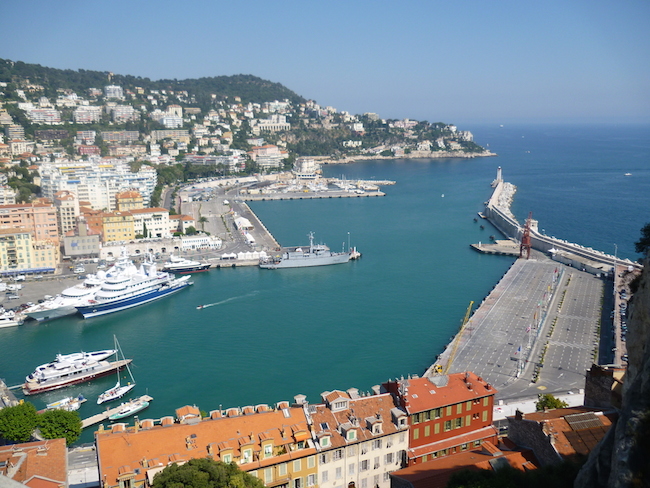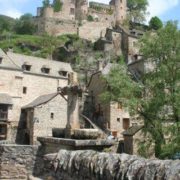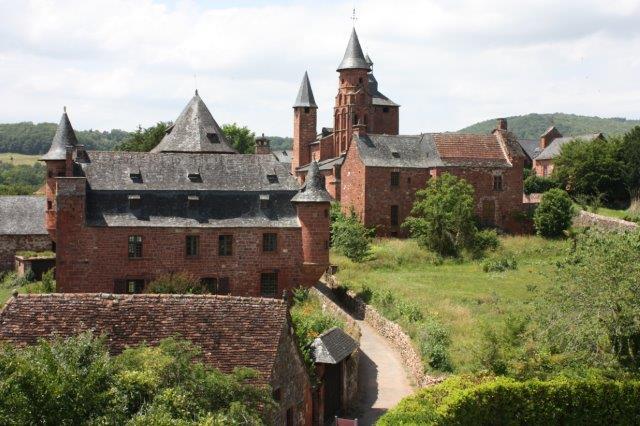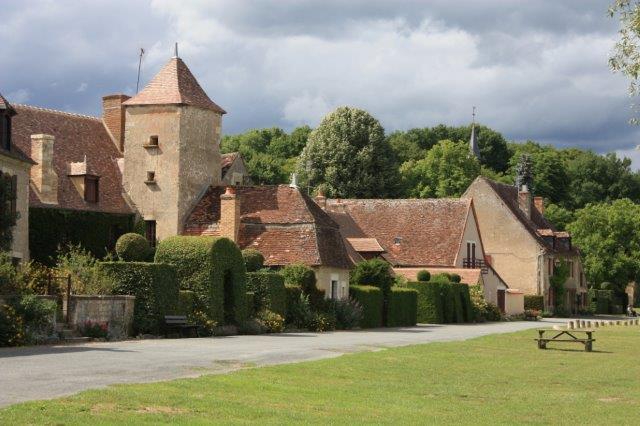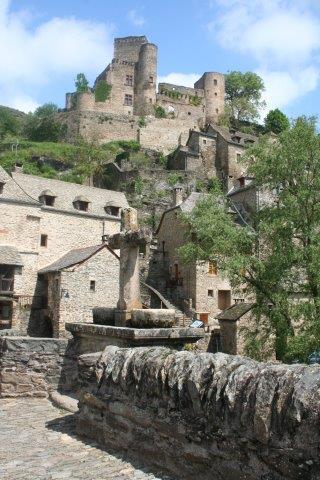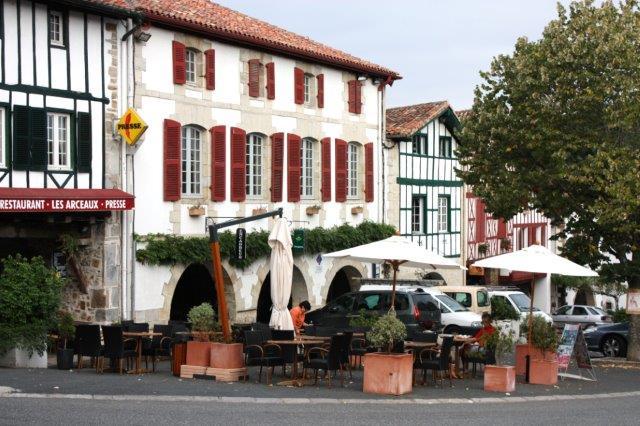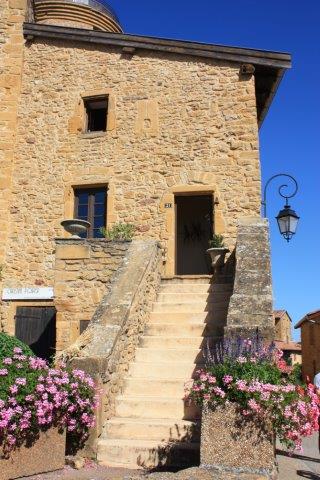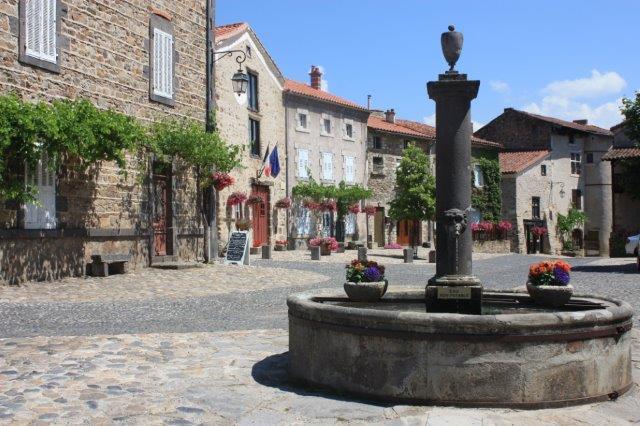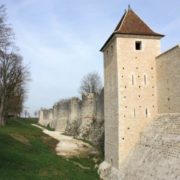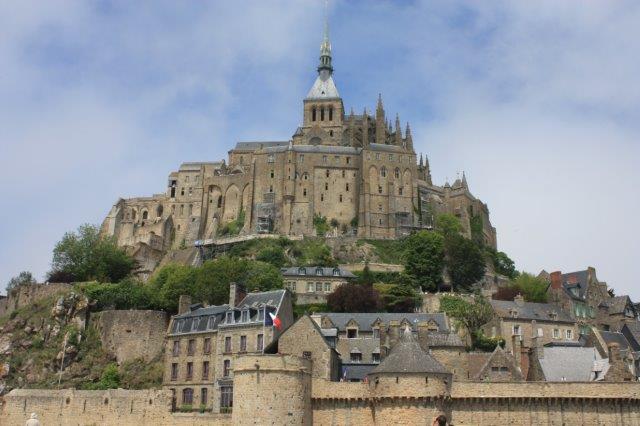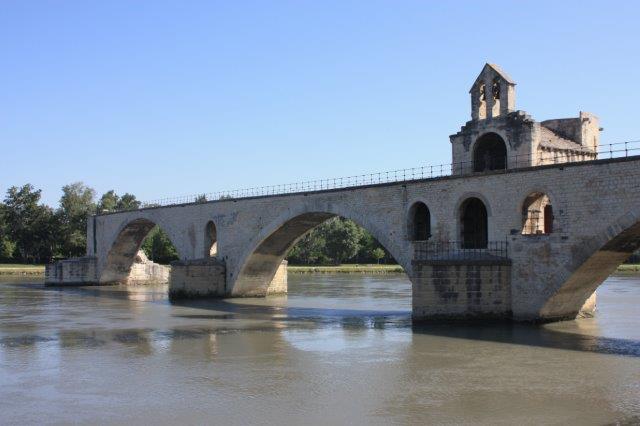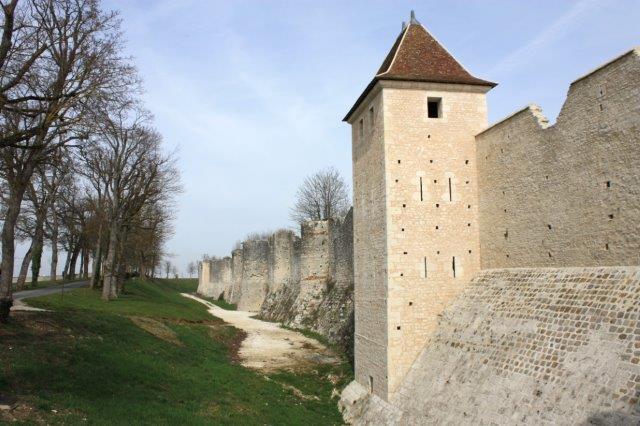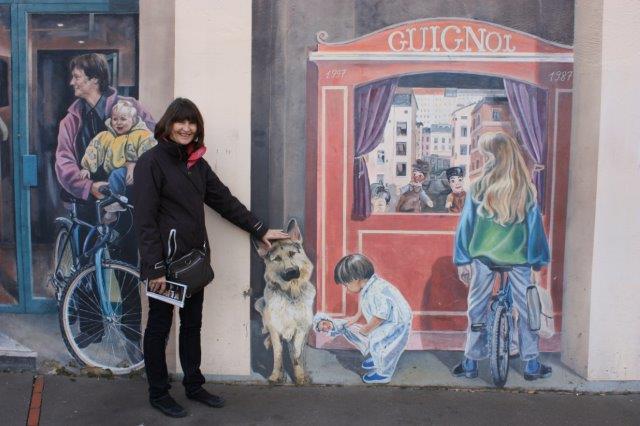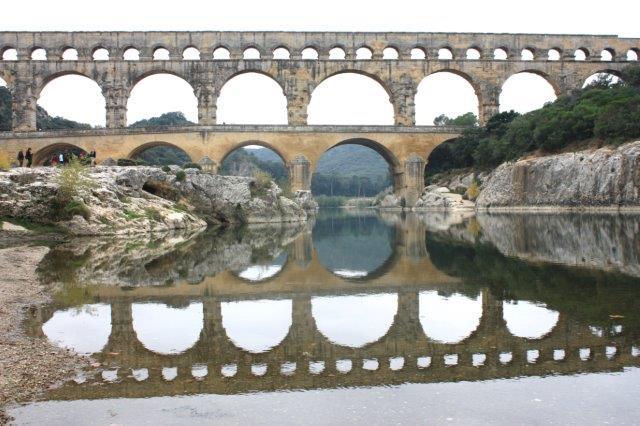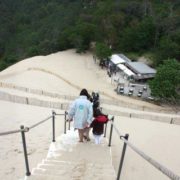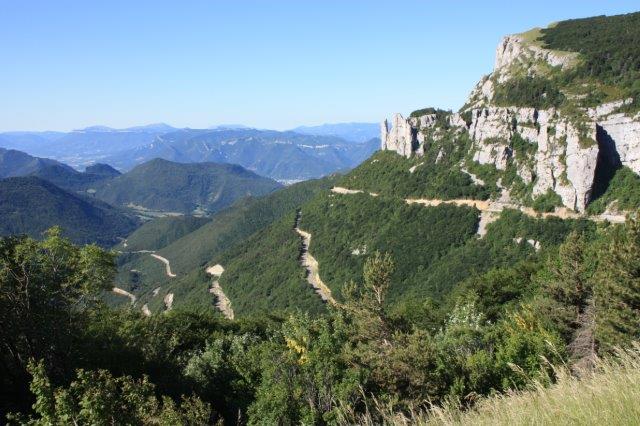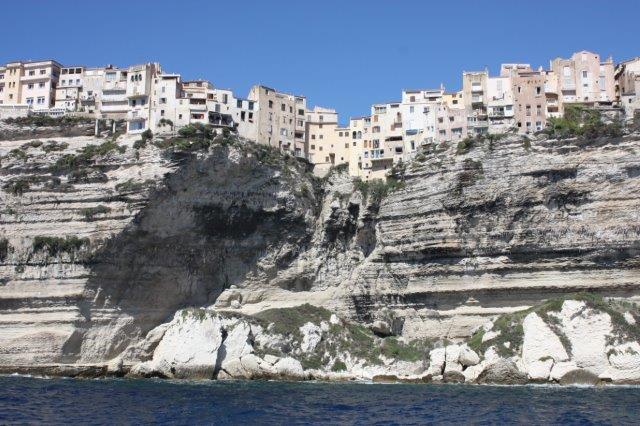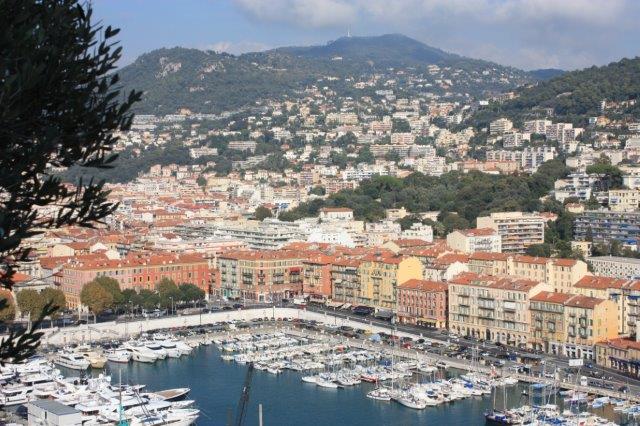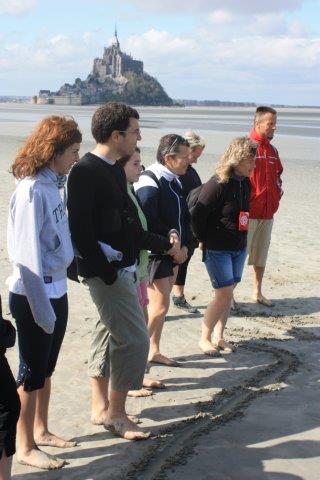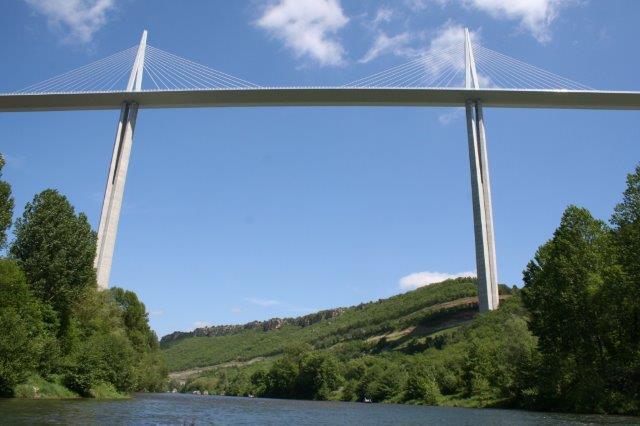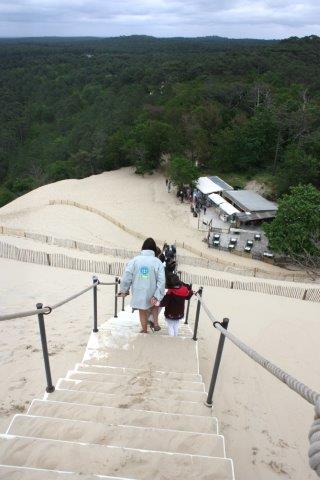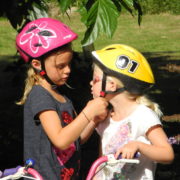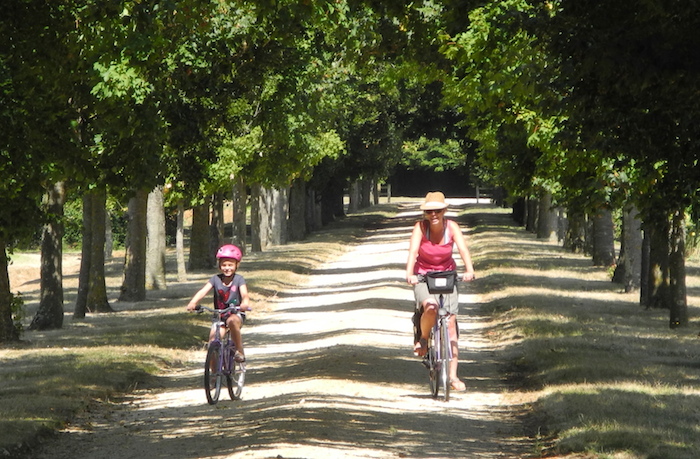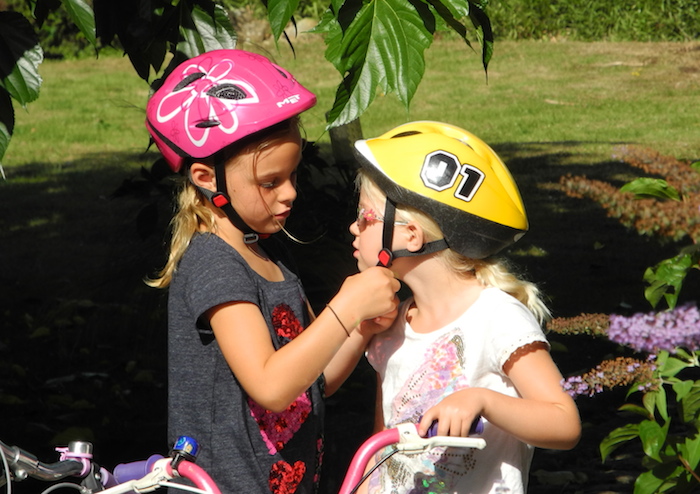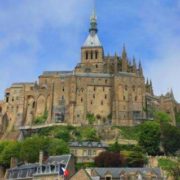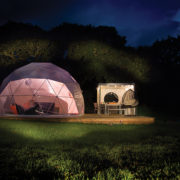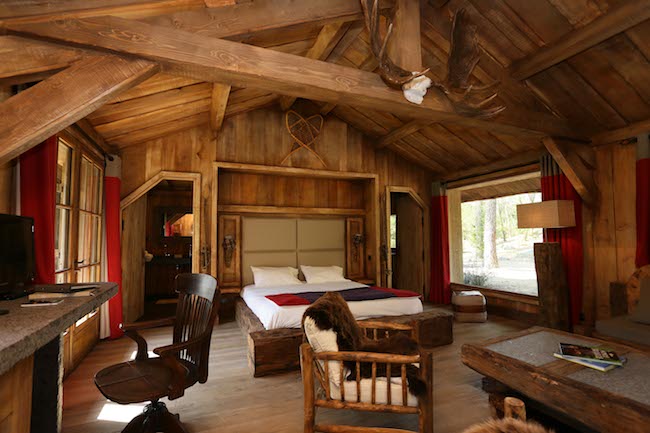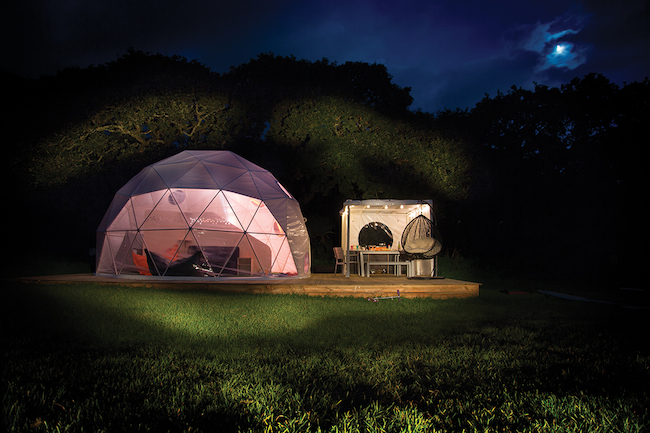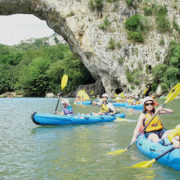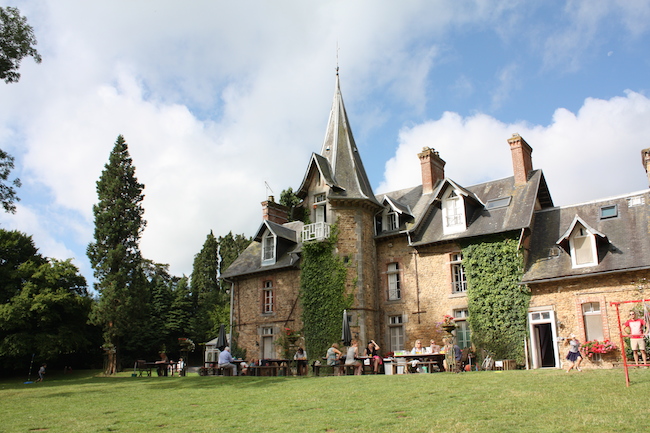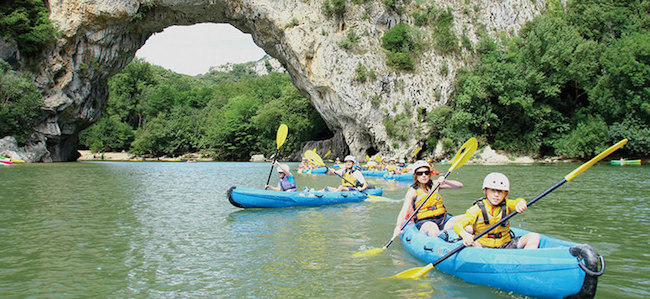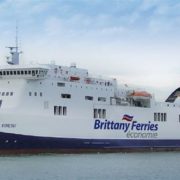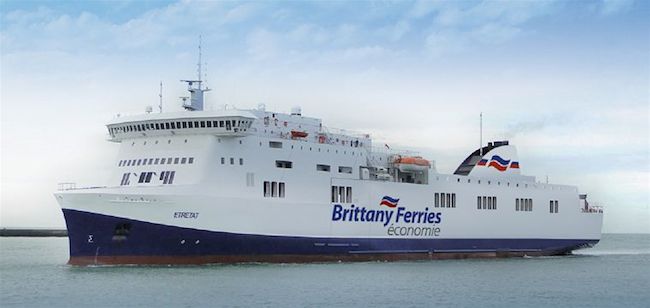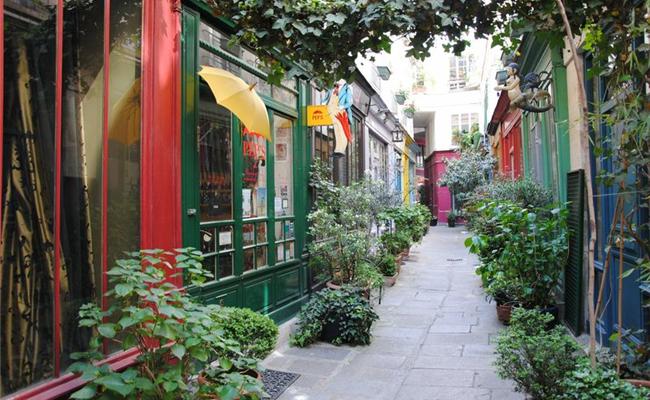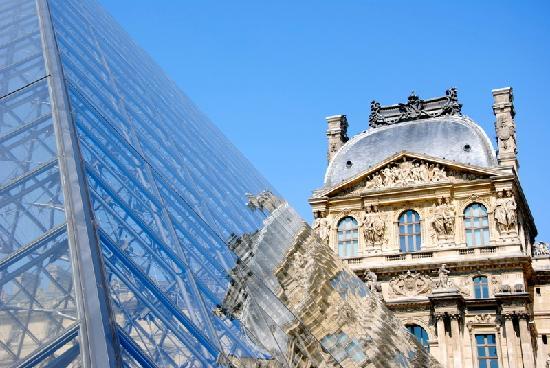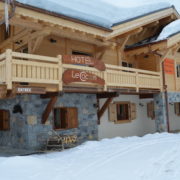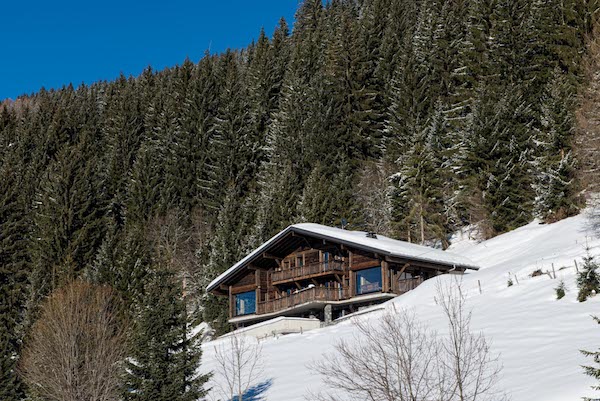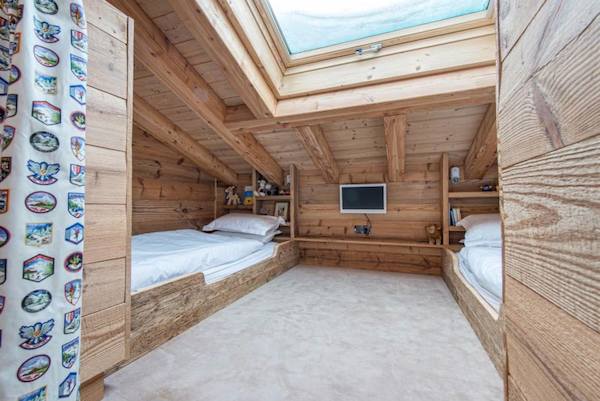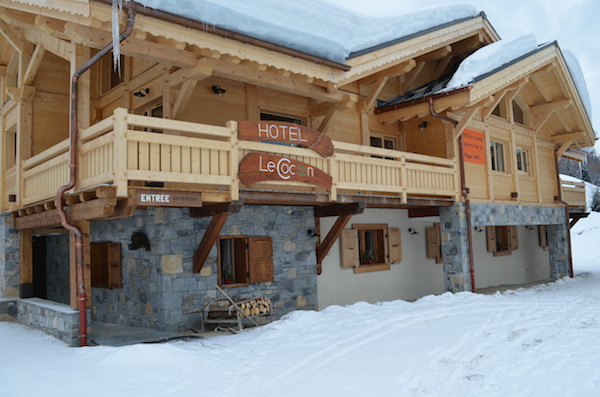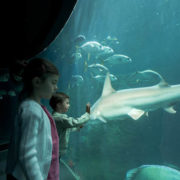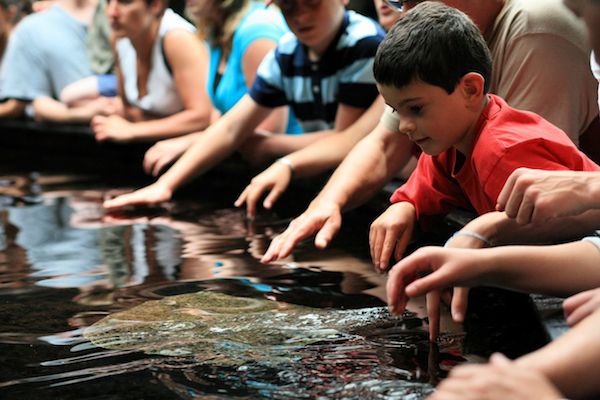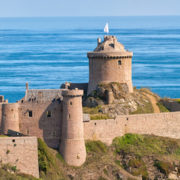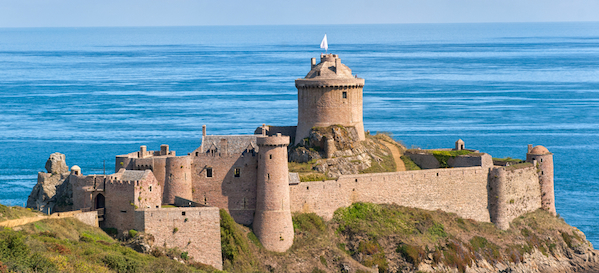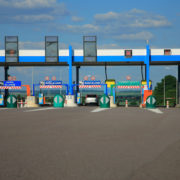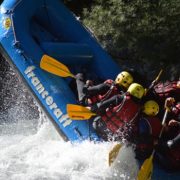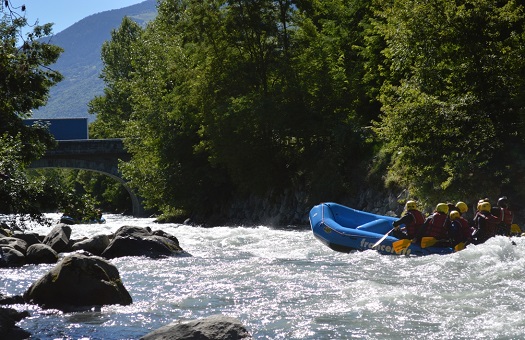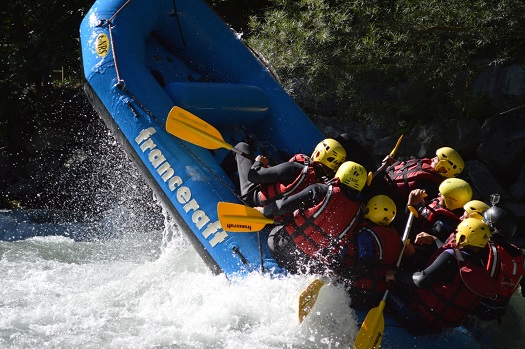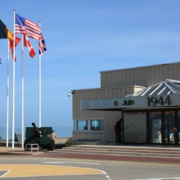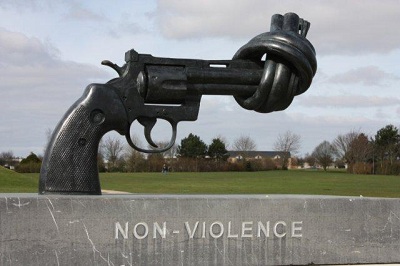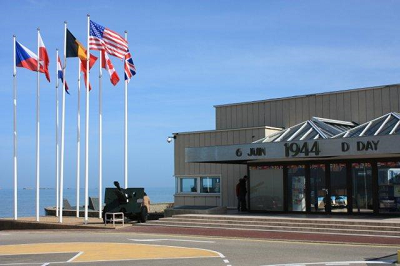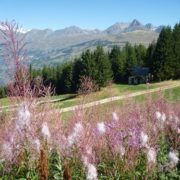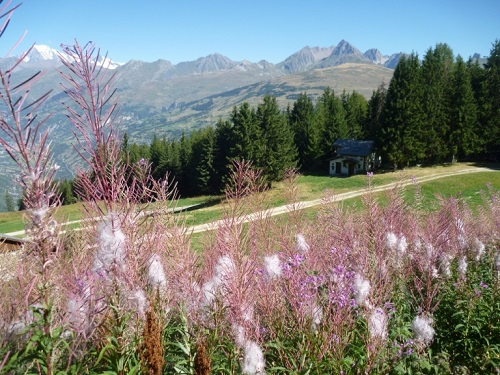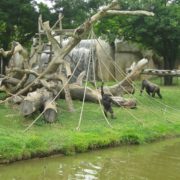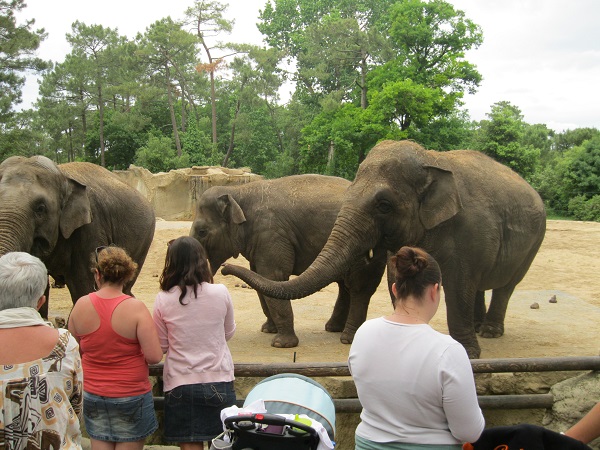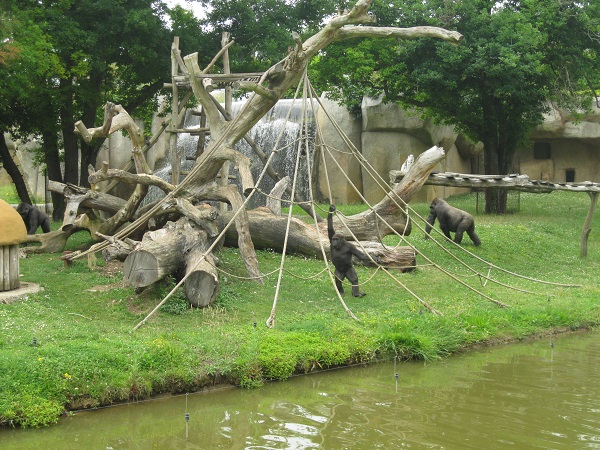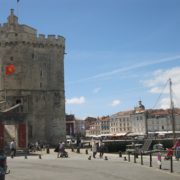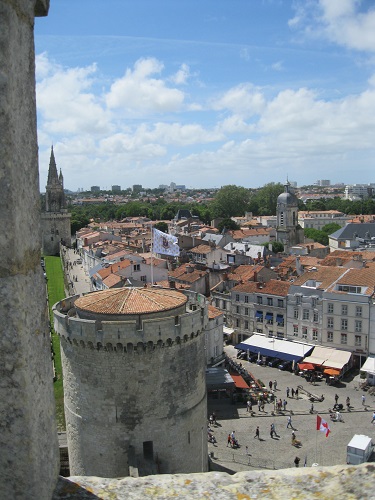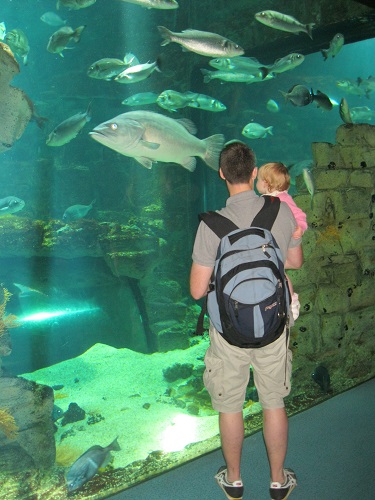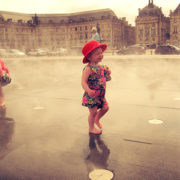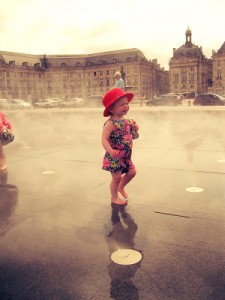The 12 Best Family Skiing Holidays in France
Are you planning to take the family skiing in France, but you’re not sure which resort to choose? We asked travel expert Jane Egginton to pick 12 of our favourite skiing holidays for families.
To find family friendly accommodation at ski resorts in France visit our Alps pages: franceforfamilies.com/gites/alps-accommodation.
1. Courchevel

This resort may be well known for its glitz and glamour, but actually its pistes are perfect for families. With a wide variety of slopes to choose from and a number of beginner runs, it is a good option for those travelling with children or older family members. Moriond is particularly good, and a quieter option, with Alitport offering gentle slopes and easy to access lifts. Novices are catered for with both ski and snowboard schools.
Picture credit: © Atout France | Jean François Tripelon-Jarry
2. Morzine
Morzine is a great resort for families and intermediate skiers – the slopes are gentle, sheltered by woods and there are lots of play areas. There also an excellent ESF ski school for children, taking tots from 3 and up. For superb family friendly accommodation, take a look at the catered chalets provided by Simply Morzine: www.simply-morzine.co.uk.
3. Les Gets
This resort regularly gets rated as one of the most family friendly resorts in the Alps, and with good reason. There are plenty of Kindergartens for kids and it offers a high standard of facilities for families of mixed skiing abilities. There is even a children’s area where adults can only enter if accompanied by children. The resort is formed around a traditional village, which gives it an authentic charm and makes it easy to get around, which is a real plus for families. An exciting kids programme includes everything from story telling to chocolate making so little ones can be guaranteed fun on and off the slopes.
4. La Giettaz
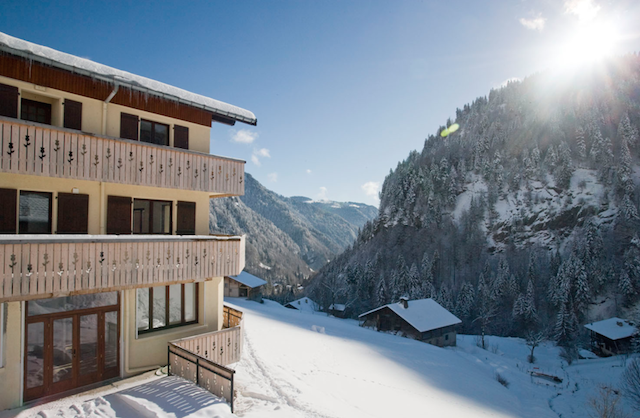
If you want to steer clear of the glitzy resorts and spend a little less on your ski holiday to France, you can opt for a lesser-known village in one of the large ski regions. One we like is La Giettaz, in the Portes Mont Blanc area, which has quiet pistes, beautiful surroundings and untracked off-piste, plus (and best of all), the cheapest lift pass for an area of this size in Europe. Ski passes are cheapest when you buy them from the local kiosks, and start from €31 per day for adults and €24 for children. For wonderful accommodation choices, see: www.chalet-la-giettaz.com.
Picture credit: © La Giettaz
5. Avoriaz

There are no cars – just horse-drawn carriages – at this resort which has long won awards for its family friendly facilities. Parents welcome the ski in/ski out option throughout Avoriaz and its safe, easy to use, pedestrianised centre. Kids love the popular ‘Village des enfants’, while the Aquariaz centre offers fun for all the family. This aquatic and leisure complex is made up of a variety of swimming pools as well as a river, heated hot tubs, water slides and even a climbing wall.
Picture credit: © Atout France | Jean François Tripelon-Jarry
6. Les Karellis
Travelling with little ones too small to walk? This resort provides special sledges for children to facilitate them travelling between its many facilities. Smaller kids can be left at the highly regarded child minding centre, while the teenagers will be entertained at the regular resort discos. There’s a ski school for children from four years old and a ‘snow garden’ to entertain non-skiing little ones. Families are entertained together too, in dedicated play areas, and with special events and activities.
7. Serre Chevalier
This family focussed ski resort is actually made up of three villages: Chantemerle, Villeneuve la Salle and Monêtier les Bains. En masse they provide a playground for all ages with attractive forests, large snowfalls and the beautiful park of Parc des Ecrins. Kids love the snow garden while parents appreciate the high level of child caring facilities. Beginners in the family as well as younger children can take to the large number of green slopes surrounding the resort.
8. La Rosière

This resort has long been a family favourite with skiiers. In a lovely setting, which gets lots of sun, families come first, ‘The Resort Where Children Are Royalty’ really is the motto here. Enjoy a compact skiing area with easily accessible ski lessons for kids as well as for older family members who can take to the well-serviced beginners slopes.
Picture credit: © Atout France | Jean François Tripelon-Jarry
9. Les Trois Valleys
Les Menuires in The Three Valleys has proudly held the ‘Family Plus Mountain’ award for years. Those on a budget will appreciate the special offers on lift passes to those travelling ‘en famille’. A guide produced by the tourist office details activities and facilities for kids. Little ones can join the ski school and there are well-serviced children skiing zones, with special magic carpets and child safety bars to help get them on and off the slopes.
10. Les Arcs
Sledging, skiing schools for kids, and the four separate villages makes Les Arcs a great option for skiing families. Thanks to a direct link with Eurostar from Central London, it is also an accessible and budget option. Of the four villages, Les Arc 1950 is the newest and also the most family friendly option. The facilities here include apres-ski activities for all ages, family focussed restaurants and plenty of leisure options in the pretty village square.
11. Val d’Isere

This is another big name, but another winner for families. Val d’Isere is a compact resort, which has a car-free centre, which means getting around for young and old is relatively easy. There is a Children’s Holiday Village – for babies as young as 18 months, a nursery and a network of nannies. Ski schools are of a high standard, catering to all abilities and for non-skiiers there’s an ice-skating rink, sledging and even a full service spa.
Picture credit: © Atout France | Jean François Tripelon-Jarry
12. Belle Plagne
Belle Plagne boasts a pedestrianised centre, a purpose built children’s ski area, and a variety of blue runs for younger skiiers and beginners. The resort is built around an attractive village, which enjoys good snowfall and has been given the French Tourism ‘Family Plus’ accreditation for its family-friendly credentials.
Find ski accommodation in France: www.franceforfamilies.com/gites/alps-accommodation.
10 of the Best …. Animal Attractions in France
From tots to grannies, everyone enjoys an animal park and France offers some unforgettable close encounters; France expert Gillian Thornton picks 10 of her favourites.
Le Parc des Oiseaux (Rhône-Alpes)
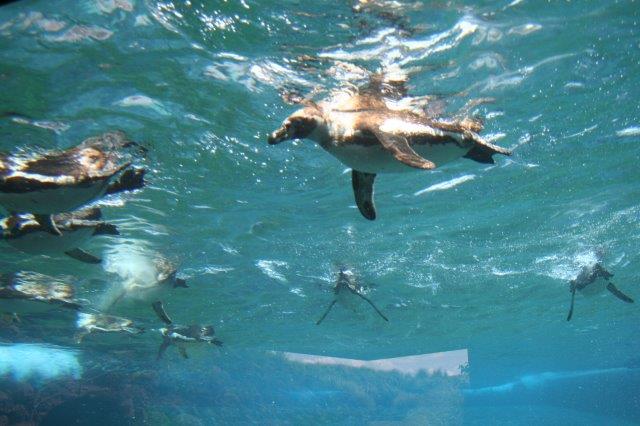
Clustered round a central lake, the Bird Park at Villars les Dombes showcases birds from around the world in landscaped areas reminiscent of their natural habitats. The biggest collection of birds in France – and one of the most diverse in Europe – the park’s collection includes many endangered species. Watch the amazing Birds in Flight show, see baby birds in the nursery, and watch feeding times for penguins, pelicans and birds of prey. www.parcdesoiseaux.com
Nausicaa (Nord-Pas de Calais)
Opened in 1991, the French National Sea Centre in Boulogne is far more than just another aquarium. Through a fascinating display of marine creatures and habitats, Nausicaa graphically illustrates why we all need to take responsibility for the world’s oceans. And by the time you’ve watched ethereal jellyfish under ultra violet light; looked down on the teeming life of a coral reef, and walked beneath sharks, you’ll want to do your bit too. Promise! www.nausicaa.co.uk
The Camargue
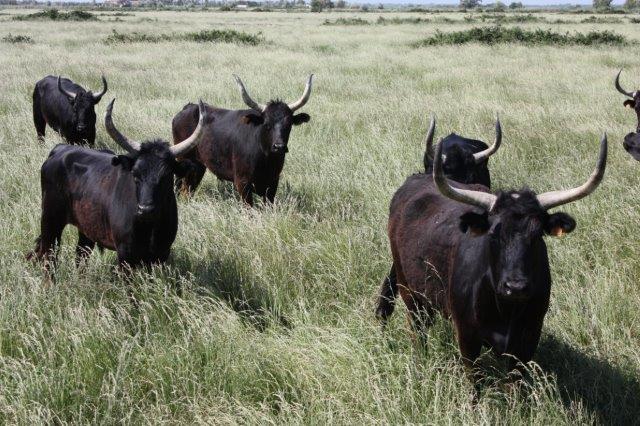
Largest wetland area in France, the Camargue spans the vast Rhône-Delta and includes areas of marsh, paddy field, and grazing land. Permanent home to the famous white horses, black cattle and pink flamingos, it’s also a stopping off point for migrating birds. Ask at any local tourist office about family-friendly nature tours on foot and on horseback, by boat and 4×4 – an unforgettable experience in a unique natural environment. www.visitprovence.com
Zooparc de Beauval (Centre)
More than 5700 animals live in this glorious wooded park near Saint-Aignan in the Cher valley, a key player in the European conservation network. Expect a ‘Wow!moment’ around every corner as you come face to face with many rare species including koalas, giant pandas, and manatees, white lions and tigers. Watch the action at animal feeding time as well as bird flying displays and sea lion shows. www.zoobeauval.com
European Bison Reserve at Sainte-Eulalie (Languedoc-Roussillon)
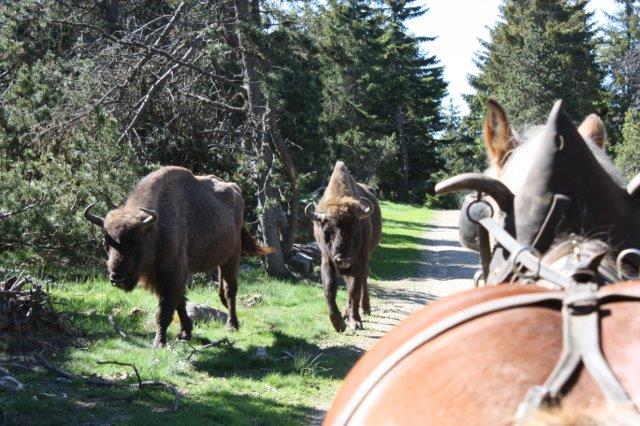
Part of an Anglo-Polish project to conserve Europe’s last wild bison, the park was set up here on a forested hillside in 1991. More than 30 bison now live in near-wild conditions with minimum human intervention. Visitors tour the reserve safari-park style in carriages drawn by beautiful heavy horses – a real treat in itself. The bison aren’t bothered by horses and will often graze right beside the carriages. Awesome. www.bisoneurope.com
Parc Zoologique de Jurques (Normandy)
Deep in the Calvados countryside, this charming animal park is a delightful place to spend an afternoon as you move seamlessly through the different continents of the world. Resident species include antelope and white lions, lemurs, monkeys and red pandas. Walk through the parrot jungle, pet the residents in the children’s farm, and watch rescued Barbary macaques scampering up the steep cliff of an old quarry beside Barbary sheep and mandrills. www.zoodejurques.fr (Reopens Feb 2015)
Les Loups du Gévaudan wolf park (Languedoc-Roussillon)
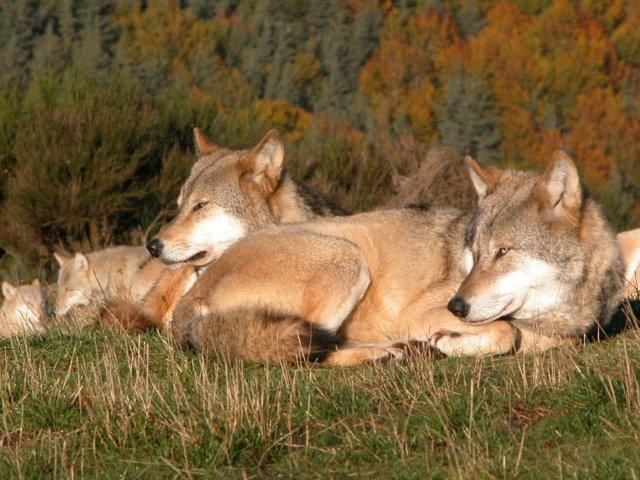
High in the mountains of Lozère above the Lot Valley, this fun family attraction at Sainte-Lucie has a serious conservation purpose. Established in 1985, it is home to more than 120 wolves from around the world, all living in semi-freedom. Learn all about them in the visitor centre, then look down into their enclosures from viewing platforms. Visit in early summer and you’ll almost certainly spot some of the cute new cubs. www.loupsdugevaudan.com
La Ferme aux Crocodiles (Rhône-Alpes)
All children are fascinated by crocodiles and at Pierrelatte in the Rhône Valley, your family can meet more than 400 crocodiles at close quarters in perfect safety. Unique in Europe, the Crocodile Farm is home to many different species, and not just crocodiles. Giant tortoises, free-flying tropical birds and lush vegetation add to the atmosphere inside the giant greenhouse and, in summer, both crocodiles and tortoises can bask outdoors in the sun. www.lafermeauxcrocodiles.com
La Forêt des Singes (Midi-Pyrénées)
Take your little monkeys to interact with an enchanting collection of sociable Barbary macaques or Magots within sight of Rocamadour, one of France’s most spectacular perched villages and places of pilgrimage. The Monkey Forest is home to around 150 individuals who live freely within the reserve. There are plenty of human guides on hand to help you interpret the behaviour of the adults and babies within different social groups, and fabulous photo memories are almost guaranteed as the macaques, in turn, watch their human visitors. www.la-foret-des-singes.com
Magnificent horses at the National Studs
Launched under Louis XIV to provide a ready supply of war horses, the French network of 22 national studs or haras nationaux today assures the breeding of quality animals for competition as well as maintaining native breeds. One of the grandest is the Haras du Pin in Normandy – nicknamed the ‘Versailles of the Horse’ – which offers guided tours and Thursday afternoon shows in summer. And don’t miss the shaggy, chocolate-brown Poitou donkeys at the Haras in Saintes near La Rochelle.
Find accommodation close to France’s best animal attractions on our gite pages: www.franceforfamilies.com/gites
Self-Catering Holidays at Disneyland Paris
If you’re planning a trip to Disneyland Paris with children it’s important to choose the right accommodation, so we asked Katie Edwards from Disney specialists WelcomeToTheMagic.com (www.welcometothemagic.com) to give us the low down on the Disney’s self-catering option – Disney’s Davy Crockett Ranch.
Says Katie: “This collection of log cabins is part of the Disneyland Paris Resort, but set in its own Swiss Family Robinson-style location surrounded by woodland, yet with loads of its own facilities to keep families wowed.
“The ranch is made up of log cabins set in clusters of 50-100, yet despite the numbers everything feels peaceful and remote. This part of the park is not served by the free shuttle buses that operate around the resort so you do need a car. You can park your car next to your cabin and parking at the Disney Parks is free (just a 15-minute drive away)
“Each cabin has two bedrooms and sleeps up to six people. There’s a double bedroom, bunk beds and a convertible sofa. The bathroom has a bath and the kitchen comes fully equipped with a fridge, microwave, hob, kettle, dishwasher and washing-up kit.
“We thought that the cabins may simply be a place to sleep, but there is actually loads for families to do together and many activities which are free of charge.
“There’s a heated indoor tropical swimming pool, indoor tennis courts, adventure play areas and even an Indian camp with teepees.
“We loved the option of self catering, but with Disney still on our doorstep. We liked that when the kids went to bed we could relax in the lounge area or enjoy a drink outside!
“If you’re driving to Disneyland Paris or have younger children then you should definitely consider Davy Crockett Ranch – there is lots to do, good accommodation and the ranch offers excellent value for money. There’s generally a discount or free nights offer available so worth checking for deals before you book!”
To find out more, take a look at their website, www.welcometothemagic.com/disney-hotels/davy-crockett-ranch.htm.
Les Petits Mousses de Plymouth
A new Saturday school in Plymouth has been launched to help children learn about French culture and language. It was setup by a number of French mums to ensure their children don’t lose touch with their French heritage.
It is believed that at least 100 children with French associations reside in the city and being the hub of western cross-channel ferry services, it’s not surprising that there are so many.
The group, named Les Petits Mousses de Plymouth literally translated as The Little Ship’s Apprentices of Plymouth, was founded by Marriig Quentel-Watson. Ms Quentel-Watson said the mothers believed their children would benefit enormously from being taught in written French. The Saturday school builds on a Saturday creative workshop for those aged five and under, Les Choco’mousses.
Ms Quentel-Watson and her friends are now trying to identify all interested families in Plymouth and the surrounding areas. The group for children aged 6 to 16 will be launched in January 2015, and will run every Saturday morning from 10am to noon. So if you speak French at home and would like your children to get additional help, email lespetitsmoussesdeplymouth@gmail.com or visit the Les Petits Mousses de Plymouth Facebook page.
Ms Quentel-Watson arrived in Plymouth in 2002 and married an Englishman. They have three sons, and she wanted them to grow with French and English equally. Her husband also became proficient in French, so that in their family the two languages co-exist.
South west France welcomes the Autumn sun
Temperatures hit 30°C on the south west coast of France this week as many families took their annual La Toussaint week’s break. Toussaint (All Saints’ Day in English) is a Catholic celebration to honour all saints, known or unknown; and is
celebrated on the 1st of November each year. This year, French families were able to spend their break on the beach – swimming and as well as sunbathing sunbathing.
 In the heart of surfer’s paradise, namely Biarritz and Saint-Jean-de-Luz, people were out until late at night and shops opened especially to catch the unexpected crowds.
In the heart of surfer’s paradise, namely Biarritz and Saint-Jean-de-Luz, people were out until late at night and shops opened especially to catch the unexpected crowds.
The average temperature in this area of France in October is around 19°C but in 2013 temperatures rose to near 30°C. The highest recorded temperature for this time of year was in 1985 when it reached 32°C.
Fancy joining them? Find accommodation in Aquitaine…
Normandy: 70 years on…
2014 marks 70 years since the Allied invasion of 6th June, 1944 and we explore some of the reason why you should visit Normandy next month.
There’s plenty to keep you interested in Normandy, from tasting the famous ‘Calvados’ and the local cheeses and breads, to exploring the ancient history. Travel east from Dieppe to follow in the footsteps of the Impressionist painters around Fécamp and Etretat, or chill out at family resorts such as Trouville and Cabourg on the Côte Fleurie. West of Caen, the wide open sands of the D-Day landing beaches are gloriously unspoilt, and the museums and heritage sites that commemorate 1944 are a great way to put you in touch with the heroic exploits of Allied soldiers, perhaps members of their own family.
Head round the tip of the Cotentin Peninsula to find quiet coves beneath the high cliffs of La Hague, west of Cherbourg, and explore the sand dunes and estuaries around Barneville-Carteret and Agon-Coutainville on the west coast. Read more about our top reasons to visit this November here
Tignes: The Skiing Destination for all the family
Tignes, set high in the Savoie Alps, is a superb, purpose built, ski in – ski out resort linked with Val d’Isère to create the l’Espace Killy domaine which offers over 300km of pistes. Although the resort is not particularly pretty, it is in a stunning setting.
Our likes/dislikes: Skiing is really convenient with most accommodation right on the pistes. As the resort is high the snow is reliable and the large skiing area provides plenty of challenge for intermediate skiers… Read more here

Photo courtesy of espritski.com
Going underground in the Pyrenees
The department of Ariège in the Pyrénées shelters some of the world’s most important cave art. Walk by torchlight inside the mountain to marvel at original paintings of bison, horses and other beasts in fabulous the Grotte de Niaux, and get the full story of the people who roamed here 10,000 years ago at the Parc de la Préhistoire in Tarascon-sur-Ariège.
Further north in the Lot Valley, don’t miss the cave formations and prehistoric artwork at Peche-Merle or the chance to take a boat ride on an underground river at the Gouffre de Padirac.
This is just one of the 6 reasons we believe you should visit the Pyrenees in 2014 or 2015, read our other 5 reasons here…
Morbihan – wild shores, legendary forests and mysterious menhirs…
One of the 4 departments that make up the popular region of Brittany, Morbihan takes it’s name from Breton ‘Ar Mor Bihan’ meaning ‘the little sea’. Discover this most beautiful area with a mild climate, rugged coastline, legendary forests and mysterious menhirs.
Morbihan is rich in scenery, from charming towns, myths and legends and traditional Breton cuisine to offshore islands surrounded by azure waters.
Find holiday accommodation to rent in Morbihan here
Know your boucherie from your boulangerie
September through to December is the perfect time to head across the channel for a day trip or weekend, and sample some authentic French cuisine and meander amidst French life. If you are learning French in one of the many evening classes offered, this is an opportunity for you to practice.
Use our Day Trip to France page to help you get to know more about where you could visit and what to do within close proximity to the ports. Don’t miss our Shopping page too, with a list of the most useful words you should learn.
Holidaying in France becomes less costly, as pound hits 2-year high
Do you plan to cart your family off to France for a week of fun and relaxation? If so, it may please you to know that doing so will now leave less of a dent on your wallet, because the pound recently shot up to its highest against the euro in 2 years. To be specific, sterling lately hit the giddy heights of 1.2699 versus the common currency, its strongest since August 21st 2012.
If a family holiday in France is what you’ve got in mind, what this means is that everything from your accommodation to the food in France will set you back less. For example, let’s say you plan to spend £1,250 on your French getaway. Right now, you’ll get +€170 more for that sum than if you’d exchanged currencies back in March 2013, when the pound was weak. So, with an extra +€170 you could book a more luxurious gite, treat the family to a great meal in a restaurant – all sorts of things!
Of course, the foreign exchange market is volatile, meaning there’s no telling how long this exchange rate will be available. With that in mind, if you want more euros in your pocket when you holiday in France at no extra cost, be sure to exchange currencies soon!
By Peter Lavelle at foreign exchange broker Pure FX. Visit us for free expert currency advice for when you holiday in France.
3 Perfect French Small Wedding Venues
There are many reasons for keeping your big day an intimate occasion, amongst them the fact that you will be surrounded by the people who love you and the day will feel more like a celebration than a performance. And with the average price of a wedding now at over £20,000, a smaller wedding will save you some money.
As part of our job to bring you some of the very best properties in France to rent, we discovered 3 gems. Each offering an idyllic location with enough space and accommodation to host an intimate ceremony.
Les Chardonnerets, Vendee
Set in the village of Mouzeuil St Martin in the South Vendée, Les Chardonnerets is a former farmhouse and barn, re-developed to create one stunning property that can sleep up to 24 people in 12 bedrooms. The property’s swimming pool will ensure you and your guests get the opportunity to cool down and relax after your big day.
The Vendee has many attractions but it is the golden sandy beaches that line 140km of coastline that prove the most popular amongst visitors. The nearest beaches to Les Chardonnerets are at L’Aiguillon, La Faute, La Tranche and Longeville all of which regularly receive European Blue Flag accreditation. For more information on the property and the area, please visit Les Chardonnerets
Le Pavillon de St Agnan, Dordogne
The picturesque Dordogne, a favourite French destination amongst many British people, is where you will find the walled estate of château le Pavillon. This large property located at the heart of four hectares of parkland offers 5 holiday gites within a restored farmhouse surrounding a horse-shoe shaped courtyard.
The property can sleep up to sixteen people in six bedrooms offering plenty of space to host your small wedding party. Outside there are two swimming pools; a private terrace with sun beds; tables and chairs with parasols; a BBQ; a balcony and a veranda overlooking the estate.
La Demeure du Bost, Limousin
La Demeure du Bost located in the department of Creuse in the Limousin is a truly spectacular French chateau, offering romantic charm and the perfect setting for your wedding party.
The restored chateau has an excellent pool and the beautiful grounds will ensure you have the setting to make it an occasion to remember for many years to come. Near La Demeure du Bost are green forests and a wide range of watersports are possible courtesy of Lake Vassivière to entertain your guests.
Important Information
There are a few legal points you need to understand about getting married in France. These are best explained on the UK Government website https://www.gov.uk/government/world-location-news/the-british-consulate-in-paris-advises-on-marriage-in-france
A popular alternative is to hold a full marriage ceremony in the UK and arrange a blessing ceremony with your closest family and friends in the grounds of a French Chateau. Please do get in touch with the owners of the chateau who will be able to help you with blessing ceremony arrangements and may also be able to help with arrangements for a full marriage ceremony in France.
Futuroscope ready for the School Summer Holidays
School’s Out! If you are holidaying in the Poitou-Charente, Pays de la Loire or Dordogne areas of France, why not pay a visit to Futuroscope, one of the best-known attractions in France. Read more about Futurescope
Here’s a taster of what you can expect to see…
New for 2014 – The Time Machine
An incredible journey back in time with the raving rabbits Futuroscope has cranked up this attraction with a unique blend of art and technology to bring visitors an all-out intensive immersive experience. Read more…
New for 2014 – Hubble Mission
This 3D adventure propels young audiences out to the Hubble Space Telescope to join the crew of the space shuttle Atlantis on a high-stakes repair mission. Their aim is to keep Hubble observing. Read more…
New for 2014 – Virus Attack
Visitors are shrunk to a microscopic size and sent hurtling on a simulator ride into the human body, where they have to pass through muscle tissue, meander down the digestive system, and fight off white blood cells in order to wipe out a dreaded virus – all with only a few minutes to do it in. Read more…
New for 2014 – AEROBAR
Designed by Aerophile in association with DVVD architects (who built the support frame) the Aerobar lifts twelve lucky guests 115 foot in the air with drink (and snack) in hand to have twelve minutes of spectacular views over the Park. Read more…
Off the beaten track: family friendly France
Are you still looking for summer holiday inspiration? These French destinations are not necessarily the best know for UK visitors, but each offers something special for families.
Cycling in Mayenne (picture)
Cycling for Softies, who specialise in gourmet cycling holidays in rural France, has launched a new itinerary to the little known Mayenne region.
Mayenne represents ‘old world’ France with imposing chateaux and easy, flat cycling beside canals and rivers, unspoilt countryside and pretty villages.
The Softies’ itinerary includes a chateaux hotel in Moulay with pool as well as chickens and goats to keep kids entertained and the gate of the hotel leads directly onto the tow path which doubles as your cycle path.
Other hotels include a beautiful mansion in Le Valle with pool and huge family suite and a traditional family run hotel in Vaiges with amazing food and wine.
Mayenne is conveniently close to the north coast ferry ports and airport at Rennes and is full of caves, pretty villages and market towns to explore.
Cycling for Softies have a rep in the region available 24hrs a day to great guests, provide and mend bikes and advise on cycle routes, stop offs, restaurants and things to do (although all guests also receive a detailed information pack on the region).
Face-to-face with nature in Limousin
Limousin, in the heartland of France, will grab the attention of animal lovers and nature enthusiasts.
First stop is Chabrieres Wolf Park, where the predator roams through the forest in giant enclosures, making it one of the few places where wolves can be observed in their natural habitat.
For those that like a bit more variety than the lonely wolf, there’s also the Reynou Animal Park, which is built around a 19th century castle and is home to over 130 species of animals from across the world.
Alternatively, for some one-on-one animal interaction, Mialaret Horse Farm in Corrèze offers three-hour courses for children aged 9-17 and treks through the surrounding villages and pastures for both adults and teenagers.
For more information see www.tourismelimousin.com/en
Short breaks in Champagne-Ardenne
While the Champagne-Ardenne region may be best known for its bubbly, there are some amazing family friendly short breaks to enjoy.
Let the kids’ imaginations run wild and stay in the Château-fort de Sedan, the largest fortified castle in Europe. Dating from the 15th century, the Château-houses the Hotellerie du Château-Fort, a 54 room hotel & restaurant built into the battlements and ramparts with spectacular views over the Meuse valley. Mums & Dads will appreciate the gourmet restaurant and kids will love exploring the castle on a fascinating audio tour with recreated scenes from history.
Tarzan and Jane wannabes can enjoy the thrill of sleeping in a forest under the stars at Le Chêne Perché amid spectacular scenery. Wild tree-top adventures for the whole family include zip wires, tree-climbing, rope bridges, cycle paths and walks through ancient oak forests at Vigny L’Abbaye. Themed guided walks and picnics are available to track boar, badger, foxes and even wild cats.
Another place to get back to nature and enjoy some forest thrills is The Arboxygene Park near Verzy. Perfect for family holidays with tree-top walks, treeclimbing adventures, nature trails and walking and cycling. A highlight is the stunning treetop bar, which is unique in France. Stay in swanky new Perching Pads accommodation, boasting boasting panoramic views of the forest and surrounding vineyards.
Roman history in Arles
If your children have been learning about Roman history, head to the Provence city of Arles, which is home to the largest number of Roman artifacts outside Rome.
Among Arles numerous National Trust and UNESCO World Heritage sites are a Roman Theatre, spa baths and the Roman Arena, which offers sublime panoramic views and is often home to traditional Camargue bull games and bull fights.
For more information, see www.visitprovence.com/en
Soft adventures in Ardèche
For families look for soft adventure, Ardèche in the Rhone Alpes has lots to offer. There is no better way to explore and appreciate the beauty of the Ardèche gorges than being swept along a river in a canoe or kayak, taking in the dramatic scenery as you go. Although the routes can be challenging at times, the lower water levels in the summer months make it very accessible to all generations of the family. Make it an afternoon activity with a short 6km run from Pont d’Arc to Chames or make it into a short break itself, camping overnight as you explore the 32km route from Gaud to Gournier.
Spotlight on Brittany Gites
Spotlight on our Gites in Brittany
Rural life
Looking for a re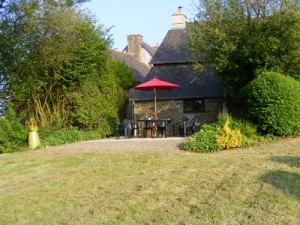 al ‘getawayfromitall’ break? La Motte Parent Gites, Plouguenast, Brittany offers two delightful gites in a peaceful, rural setting yet within walking distance of the essentials (a lazy bar, the baker and a delicious creperie). Surrounded by beautiful countryside this area is great for walking, cycling, horse riding and fishing etc. and there are numerous golf-courses.
al ‘getawayfromitall’ break? La Motte Parent Gites, Plouguenast, Brittany offers two delightful gites in a peaceful, rural setting yet within walking distance of the essentials (a lazy bar, the baker and a delicious creperie). Surrounded by beautiful countryside this area is great for walking, cycling, horse riding and fishing etc. and there are numerous golf-courses.
The cultural centre of St. Brieuc, with its variety of surrounding beaches, is only 30 minutes away.
La Garenne has two bedrooms and sleeps 4 – 5 and La Pompe has one bedroom and sleeps 2 – 3.
Character Cottages
Just a 20 minute drive from some of the most stunning white sand beaches Brittany has to offer, Apple Tree Gite, near Lannion on the Côtes-d’Armor is straight out of a fairytale picture book. Set in 5 acres of tree lined grounds with a large fenced play area, this beautifully modernised detached Breton cottage is a real scene stealer and the kids will love it.
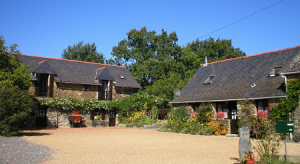 La Cour Cottages in Massérac, Loire-Atlantique also have great character. These two cottages and two converted barns (sleeping, 4, 5, 6 & 10) are nestled on the border of Southern Brittany and Loire Atlantique, perfectly placed for reaching all the beaches and attractions of the region. Each property has it’s own large, private and enclosed garden with garden furniture and BBQ. There is a large selection of bicycles from childs to adults as well as child bicycle trailers and child seats to use free of charge.
La Cour Cottages in Massérac, Loire-Atlantique also have great character. These two cottages and two converted barns (sleeping, 4, 5, 6 & 10) are nestled on the border of Southern Brittany and Loire Atlantique, perfectly placed for reaching all the beaches and attractions of the region. Each property has it’s own large, private and enclosed garden with garden furniture and BBQ. There is a large selection of bicycles from childs to adults as well as child bicycle trailers and child seats to use free of charge.
A bit of a treat
La Chaumiere in Baud, Morbihan, Brittany is one of two luxury detached thatched cottages in the bucolic hamlet of Le Helleguy. Sleeping 8 in 4 bedrooms, it has its own private terrace with gas BBQ and patio furniture and shares 3 acres of beautiful grounds All the mod cons are here including WIFI internet access & IPod docking station and the ‘piece de resistance’ is the undercover heated swimming pool with retractable roof. For the kids there are outdoor games, swings, slides and for the grown-ups Spa treatments are also available – wow!
Top 10 … French art locations
There’s an undeniable thrill at walking in the footsteps of great artists and seeing the scenes they painted. France expert Gillian Thornton tell us about her favourite art locations.
Need somewhere to stay. Find a gite close to these arty settings.
Barbizon – Ile-de-France
Forerunners of the Impressionists, the Barbizon School owes its existence to the invention of paints in tubes. In the 1830s, a group of young artists gathered at Barbizon on the edge of the Fontainebleau forest, spending long days painting out of doors in natural light. Today, you can visit the studio of Jean-François Millet; the former home of Théodore Rousseau; and – my absolute favourite – tread the boards of the Auberge Ganne where the impoverished painters lodged in shared rooms and painted vibrant pictures on cupboard doors.
Greville-Hague – Normandy
Jean-François Millet grew up in the hamlet of Gruchy, west of Cherbourg, in the rugged area of La Hague. Tucked into the folds of the countryside near the high cliffs, Millet’s home village has changed little since he was born there in 1814. Watch the multi-media presentation in his childhood home then walk down the lane to the cliff path to compare reproductions of his paintings with the real deal – scenes refreshingly unspoilt in almost 200 years.
Giverny – Normandy
Claude Monet’s floral plot in Giverny inspired many of the painter’s best known works, including his famous studies of water lilies. The great man painted scenes all over Normandy, including the chalk cliffs at Etretat and the facade of Rouen cathedral, but Giverny is synonymous with his genius. Monet’s garden is a must-see for its extravagant planting and riot of colour – go early or late in the day to avoid the worst of the crowds, but do go.
Moret-sur-Loing – Ile-de-France
English Impressionist Alfred Sisley settled in the pretty riverside town of Moret-sur-Loing in the late 19th century and spent 20 years painting the medieval streets and ancient fortifications, quiet riverbanks and quaint houses. Amongst his best-loved works is the view of the bridge and church from across the river, but a self-guided route links the locations for some of Sisley’s other works.
Essoyes – Champagne-Ardennes
When Pierre-Auguste Renoir fell in love with Aline Charigot in 1880, he also fell for her home village, Essoyes on the borders of Champagne and Burgundy. Every summer, they came here with their three sons, and now lie in the village cemetery. Renoir’s house is family-owned and closed to the public, but a new visitor centre charts his life and work. Signs direct visitors from the Espace Renoir past picturesque stone houses, across the river Ource, and through a flower garden to his studio.
Aix-en-Provence – Provence
Paul Cézanne was born in Aix in 1839 and died there in 1906. Follow the studs in the pavement to see more than 30 places of interest from his school and family homes to the cafes where he socialised and the Musée Granet that houses some original paintings. The shady main street, colourful market, and bustling cafes simply ooze Cézanne and his art, but don’t miss his studio – the Atelier Cézanne – just outside the town, nor the views of Sainte-Victoire mountain which he painted nearly 500 times.
Nice – Côte d’Azur
Matisse came to Nice on holiday, fell in love with the light, and never left, living here from 1917 until his death in 1954. Housed in a glorious 17th century Genoese villa surrounded by olive trees, the Matisse Museum gives a fascinating insight into the way his style developed from his very first ‘conventional’ painting in 1890 through drawings and the paper cut-outs of his later career.
Arles – Provence
Gateway to the Camargue, Arles was an inspiration to Vincent Van Gogh who arrived here in February 1888 in search of external light and internal enlightenment. He found both in this attractive Roman town, embarking on 15 months of high productivity that resulted in more than 300 paintings and drawings. Stand on the spots that inspired him and see reproductions of paintings such as Evening Café, Starry Night, and Old Mill. The distinctive outline of the Langlois bridge is located just outside the town – an iconic backdrop to any souvenir photo,
Albi – Midi-Pyrenees
A former bishops’ palace may seem an unlikely place for pictures of brothels and prostitutes, but the world’s largest collection of work by Henri Toulouse-Lautrec somehow seems to sit perfectly inside its imposing red brick walls. The city’s favourite son suffered from a congenital condition that stunted his growth, so turned to painting, studying in Paris and immortalising the colourful characters of Montmartre. This impressive museum recently reopened after a major makeover and hits the spot perfectly, whether you’re a major Lautrec fan or just a general art lover.
Paris – Montmartre
The Toulouse-Lautrec Museum in Albi includes his celebrated publicity posters, the first of which was commissioned by the directors of the Moulin Rouge in 1891. This world-famous cabaret – home of the can-can – is nestled at the foot of Montmartre, once a hilltop village with windmills and a vineyard, and a mecca for Bohemian artists. It’s undeniably touristy but you can still sense what this colourful quarter of actors and artists, cafes and clubs must have been like at the turn of the 20th century.
10 of the Best … History Locations for Families
Classroom lessons come zinging vividly at France’s many historical sites. Travel writer Gillian Thornton gives us 10 to try these for starters…
Want somewhere to stay? See our list of gites close to history locations.
Wellington Quarry, Arras, Nord (Nord-Pas de Calais)
For families fired up by the World War I centenary, the Wellington Quarry in Arras is one of the most thought-provoking sites. Named Wellington after the tunnellers from New Zealand who enlarged the network, these subterranean passages were turned into a temporary holding station for Allied troops in 1917 before the Battle of Arras. Visitors tour underground ‘rooms’, see graffiti, and stand at the foot of the rough stairway that led to daylight and the German guns. Intensely moving.
Champollion Museum, Figeac (Lot)
Picturesque Figeac was the birthplace in 1790 of Jean-François Champollion who unlocked the secret of Egyptian hieroglyphics by deciphering the symbols on the Rosetta Stone, now in the British Museum. His former home is now a fascinating museum to the history of world writing from ancient times to the present day. Spread across four floors, this is an attraction that’s geared to all ages. Don’t miss the horizontal representation of the Rosetta Stone in black granite in the square behind.
Thiepval Memorial, Somme (Picardy)
Not far from Albert, the Thiepval Memorial is the largest British war memorial in the world, designed by Sir Edwin Lutyens and carrying the names of more than 72,000 British and South African soldiers with no known graves, who died on the Somme between July 1915 and March 1918. The visitor centre and adjacent cemetery complete the story, along with further cemeteries and the Ulster Tower just across the fields. A Great War site guaranteed to inspire a younger generation to world peace.
Azincourt Museum (Nord-Pas de Calais)
Medieval warfare is a hit with most kids, but especially when you can stand on the spot where it all took place. On October 25th 1415, Henry V’s archers decimated a French army more than twice their size outside the village of Azincourt – immortalised as Agincourt in English history. Feel the weight of medieval combat weapons, try on helmets, and enjoy all kinds of interactive fun at the Medieval Centre, before exploring the battlefield itself.
Roman remains at Vienne and St Romain-en-Gal (Rhône-Alpes)
Vienne and St Romain-en-Gal on opposite banks of the Rhône once made up the Roman town of Vienna. Vienne’s main theatre still accommodates 10,000 people for concerts ranging from Robert Plant to an annual jazz festival, whilst St Romain-en-Gal retains its original street plan, which gives real meaning to the artefacts and models in the spacious museum. Kids love walking on paving stones pitted by chariot wheels and posing beside the line of communal toilets!
Cave paintings in the Grottes de Niaux, Ariège (Midi-Pyrenees)
Tucked in the shadow of the Pyrenees, the Grotte de Niaux in Tarascon-sur-Ariège is one of France’s most important prehistoric sites. Follow an ancient river bed by flashlight, then turn off the torches … your guide will shine a beam on paintings of bison and ibex so real you expect them to leap from the wall. Created by Magdalanian artists 14,000 years ago, the animals’ bodies follow the contours of the rock to create an extraordinary 3-D effect. Book ahead to avoid disappointment.
Roman theatre at Orange (Provence)
Orange is one of just three Roman theatres to have retained its entire back wall intact, the others being in Turkey and Syria. The wall towers over the town rooftops, but that does nothing to lessen the ‘Wow-factor’ when you enter the auditorium beneath the steep tiers of seats. Watch the short film about the rituals of Roman theatre performances, and don’t miss the Art and History Museum opposite to see artefacts found in and around the town.
Bayeux Tapestry (Normandy)
Wrongly named but hugely impressive, the Bayeux tapestry is actually an embroidery on linen. This glorious strip cartoon in stitch is full of drama and detail, all laced with a generous dose of guts and gore, and audio-guides make sure you spot every key element, even down to the spy hiding behind a tree. Complete the William the Conqueror triangle by visiting his ducal castle at Caen and his birthplace at Falaise. A few euros will buy younger children an activity booklet packed with fun facts and puzzles across all three sites.
Arromanches (Normandy)
June 2014 marks the 70th anniversary of the Normandy landings on D-Day – or Jour-J to the French. Every museum, memorial and beach has its own USP, but the town of Arromanches is particularly family-friendly for the remains of the floating Mulberry Harbours that remain off shore or – at low tide – on the beach. Young visitors can put the whole episode into context at the seafront museum, with regular talks given in English.
Lewarde Mining Museum, Nord (Nord-Pas de Calais)
The former coalfield area around Lille and Lens is still proud of its industrial heritage and the former pit at Lewarde is now France’s largest mining museum. Visitors get a real sense of miners’ daily lives with tours of the changing rooms, machinery buildings, and even a section of the coalface. Expect atmospheric exhibits, interactive experiences, and a few surprises along the way.
Cote d’Azur launches discount card for holiday savings
Cote d’Azur family holidays have just got cheaper following the launch of a new discounts card providing savings on more than 100 activities and attractions.
The money-saving pass costs from just €39 for adults and €21 for children, and gives free access to tours and excursions, natural attractions, museums and monuments, leisure facilities and natural attractions.
There are two durations of pass available, for three days (€39 per adult, 21€ per child) and six days (€54 and €29).
Each adult pass gives total savings of up to €1,000, and a child pass is worth up to €500, so they really do seem to be a great way of cutting costs for families.
There’s an additional bonus for larger families who only need to pay for two adult and two child passes – all additional children’s passes will be provided for free.
In total there are 115 activities featured, including guided town tours, boat trips. mountain biking and access to the Via Ferrata mountain routes, entry to cave systems, swimming pools and much more.
For full details, take a look at: cotedazur-card.com.
There’s a great selection of family holiday accommodation in our Cote d’Azur gites section.
Ten of the Best – Beautiful French Villages
France is dotted with stunning small villages, each one reflecting local history, architecture and tradition. Here, France fan Gillian Thornton picks out some favourites amongst the 156 members of the elite association, Les Plus Beaux Villages de France.
Want somewhere to stay? Search our list of gites close to Les Plus Beaux Villages.
We know we’re in for a treat when we see the familiar Plus Beaux Village logo with the green church spire and red flowers at the entrance to a French village. Communities must have fewer than 2,000 inhabitants to be eligible for membership, as well as two protected historical sites or monuments.
If the majority of the population agree, the village can ask to be inspected and judged against a list of nearly 30 criteria. Only around 1 in 5 will past the test and membership isn’t for ever – those who fail to maintain standards can be declassified.
Every village has its own special atmosphere, but after visiting more than half of those listed in the current handbook, these are ten of mine:
Collonges-la-Rouge, Corrèze (Limousin)
It was here in 1981 that the then mayor, Charles Ceyrac, launched the idea of an association to safeguard and promote France’s most beautiful and historical villages. Today, Collonges-la-Rouge is still one of the best – and most unusual – with its red sandstone buildings, tempting craft shops and narrow alleyways.
Apremont-sur-Allier, Cher (Centre)
Dominated by a hilltop chateau, this cluster of honey-coloured stone cottages lines the banks of the tranquil river Allier, just before it flows into the Loire at Nevers. Visit the glorious Parc Floral beneath the chateau (not open) with its lush plantings, ornamental lake and picturesque cottages. Then soak up those lovely river views from the chateau terrace.
Auvillar, Tarn-et-Garonne (Midi-Pyrénées)
Perched on a cliff above the Garonne, Auvillar became rich by extracting tolls from river traffic, until the building of canals and railways turned it into a sleepy backwater. But today, craft shops and cafes have given the village a new lease of life. Browse the boutiques then relax at a table in the triangular main square with its unusual circular Grain Hall, location for the Sunday-morning produce market.
Belcastel, Aveyron (Midi-Pyrénées)
Aveyron boasts more Plus Beaux Villages than any other département, including Conques with its magnificent church and cloister, and the Knights’ Templar village of La Couvertoirade. But I’ve a soft spot for Belcastel which is less well known but boasts a tranquil riverside setting, an excellent hotel-restaurant (Le Vieux Pont), and a partially ruined hilltop castle which is now home to – of all things – an art gallery of comic strip characters.
Barfleur, Manche (Normandy)
Perched on the north-east corner of the Cotentin peninsula, Barfleur was the leading Anglo-Norman port in the Middle Ages. Look out for the plaque commemorating the departure of William the Conqueror on a rock beside the quay and enjoy tranquil views of the granite harbour and cute church from the path that skirts the harbour.
La Bastide-Clairance, Pyrénées-Atlantiques (Aquitaine)
The traditional whitewashed houses and red-painted timbers of French Basque Country give this unique area a permanently upbeat air, and the colour scheme doesn’t get any better than at La Bastide-Clairance, a traditional 14th century bastide town of the Middle Ages built on a grid system around a central square. Permanent craftsmen ensure that this is a village for all seasons, not just a summer outing.
Gordes, Vaucluse (Provence)
Visible from afar across the vineyards of the Luberon, Gordes is one of the showpiece perched villages of Provence, much photographed for layer-upon-layer of houses that spill down its steep slopes. For a real sense of both atmosphere and location, wind up the narrow streets from the valley floor on foot, but resist buying drinks in the popular hilltop square – surely the most expensive glasses of Orangina in France!
Oingt, Rhône (Rhône-Alpes)
Set in the heart of the Golden Stones area of the Beaujolais vineyards, the distinctive yellow stone of Oingt glows a different colour according to the weather and time of day. Founded on a hilltop above the Azergues valley in Gallo-Roman times, Oingt was a powerful player in the Middle Ages with a chateau and fortified gates. Today, it’s the showpiece village of an area dotted with pretty communities.
Saint-Cirq-Lapopie, Lot (Midi-Pyrénées)
Narrow streets, half-timbered houses, Renaissance facades … and did I mention the ruined castle, the panoramic river views, and bustling restaurants? Saint-Cirq-Lapopie really does have it all, with visitor numbers to match. But don’t let that put you off. Visit outside peak times and you can still have this exquisite village virtually to yourself.
Lavaudieu, Haute-Loire (Auvergne)
An 11th century Benedictine abbey was the starting point for this gem of a village, the only one in Auvergne to have retained its Romanesque cloister. Religious treasures include wall paintings inside the church and refectory, but it’s the spiritual setting here that stands out for me. Just enjoy the views over the quiet valley of the Senouire river – ‘La Vallée de Dieu’ – which gradually morphed into Lavaudieu. Glorious!
For details of all member villages in the association, visit: www.lesplusbeauxvillagesdefrance.org.
10 of the best … UNESCO World Heritage Sites
This summer, France hopes to see the prehistoric paintings of the Chauvet Cave in Ardèche added to the UNESCO World Heritage Site list, ahead of the opening of a replica cave next February. With more than 30 UNESCO sites to choose from, travel writer Gillian Thornton lists 10 of her favourites.
Looking for somewhere to stay? Find a gite close to these UNESCO sites.
Versailles – Palace of the ‘Sun King’
Bling by the bucketload and attitude with a capital A, that’s Versailles, showpiece of Louis XIV, showiest French monarch of them all. The chateau can be overwhelming in peak season with tourists from every country, so I’d recommend families to take a brisk walk through the opulent interior and then head for the huge formal park.
Arles – Roman and Romanesque monuments
Vincent Van Gogh was inspired to paint many of his best known works in Arles with its towering Roman theatre and arena. Dating from the 1st century BC, they are still used for special events. The Romanesque monuments from the 11th and 12th centuries are some of the finest in Provence – don’t miss St Trophime church and its cute cloister.
Mont St Michel
The iconic outline of Mont St Michel can be seen from far away, rising out of the bay off the coast of Normandy. Perched on a rocky island and surrounded by a fortified village, the soaring hilltop abbey was one of the most important Christian sites in the Middle Ages and today attracts visitors from all over the world. Stop off at one of the discovery centres round the bay to find out about tides, flora and fauna, and book a guided bay walk from the foot of the Mount at low tide.
Avignon’s historic centre
Everyone knows the historic bridge – or half-bridge – thanks to the popular French nursery rhyme, so don’t miss the chance to walk along what’s left. But Avignon is far more than just a bridge. Seat of the Popes in the 14th century, the Gothic Palais des Papes dominates a collection of towering episcopal buildings and vast square.
Provins – Medieval trade fairs
One of the less well known UNESCO sites, Provins really captured my imagination. East of Paris towards the borders with Champagne and Burgundy, this delightful fortified town hosted huge Medieval trade fairs which welcomed merchants from northern Europe and the Mediterranean. Expect city walls and half-timbered buildings, a ruined castle and shed loads of atmosphere.
Lyon – 2000 years of architecture
One of my very favourite French cities, Lyon boasts 2,000 years of urban architecture that include twin Roman theatres and a stunning Renaissance Old Town, 18th century boulevards and a 19th century silk district, all neatly packaged together with two major rivers, fabulous museums, and some of the best places to eat in France. Kids will love the Museum of Miniatures, the funicular to the hilltop viewpoint, and the amazing painted walls.
Saltworks of Franche-Comté
Salt production may not sound like a riveting visitor attraction but these two linked sites in the lush countryside of eastern France provide a fascinating glimpse into the dramas of salt production in the 18th century. Brine from springs beneath Salins-les-Bains was pumped through pipes to the grand Royal Saltworks at Arc-et-Senans for processing – a combination that bring the industrial revolution vividly to life.
Albi – cathedral and episcopal city
Like Avignon, Albi is remarkable for its complex of episcopal buildings, but this time they’re built in the distinctive red and orange brick of the region. The towering 13th century cathedral of Ste Cécile stands high above the river Tarn, sober from the outside but a riot of colour inside. Don’t miss the formal terraced gardens of the Palais de la Berbie next door, former bishop’s residence and now home to a museum showcasing Albi’s favourite son, Henri Toulouse-Lautrec. A must for budding artists.
Loire Valley –architecture and countryside
From Sully-sur-Loire to Chalonnes, France’s longest river is listed by UNESCO for its towns and villages, chateaux and natural landscape. Each riverside town has its own story to tell and there are enough elegant chateaux to keep most visitors going for days. My tip would be to pick a couple of the high profile players like Chambord or Chenonceau, and a couple of smaller, more intimate properties, then hire a canoe to explore the river from water level or cycle part of the Loire à Vélo long distance trail.
Pont du Gard – Roman aqueduct
Visit any major Roman monument and one of the first questions is always ‘How on earth did they do it?’. But never more so than at the Pont du Gard, an astonishing feat of Roman engineering, not just for the massive three-tiered span across the Gard river, but for the miles of cross-country aqueduct that lead to it. Get an overview at the visitor centre before following the tarmac path to the aqueduct itself. Then just wander the river banks to admire it from every angle and marvel. Awesome stuff.
For details of all UNESCO World Heritage Sites, go to: http://whc.unesco.org/
10 panoramic French views
France is full of unforgettable views from river valleys and mountain tops to perched villages and iconic monuments. France specialist Gillian Thornton lists 10 of her favourite panoramic perspectives – all easily accessible to visitors.
Col de Rousset, Vercors (Rhône-Alpes)
Rising dramatically above the Rhône Valley south of Valence, the limestone plateau of the Vercors massif is a mix of steep ridges, deep valleys and spectacular caves. Spectacular roads abound but my favourite is the Col de Rousset on the southern edge of the plateau. Emerge through a tunnel to wind down a series of tight hairpin bends to the lavender fields of the Drôme Valley and the historic small town of Die.
Chaîne des Volcans, Auvergne
The Regional Nature Park of the Auvergne Volcanoes stretches for almost 60 km from north to south, west of Clermont-Ferrand. For the ultimate view, treat yourself to a hot air balloon trip, but for a cheaper alternative catch the electric train to the top of Puy de Dôme, 1465m above sea level. The journey takes 15 minutes one way and operates all year round.
Find accommodation in Limousin and Auvergne.
Bonifacio from the water
France’s most southerly town, Bonifacio in Corsica is famous for its Old Town, perched on a narrow promontory dividing the Mediterranean from a narrow, sheltered harbour. For sheer in-your-face grandeur, view this triumph of engineering from one of the cruise boats that leave regularly from the marina. Then just marvel at how medieval houses several storeys high are still clinging to the edge of a sheer cliff.
Arc de Triomphe from Place de la Concorde
I love looking down on Place de l’Etoile from the top of the Arc de Triomphe to see the star of streets that radiate out. But best of all has to be that Napoleon’s triumphal arch viewed from Place de la Concorde. Your eyes are drawn up the rise of the Champs-Elysées towards the towering monument that stands against an ever-changing backdrop of high rise, modern buildings..
Promenade des Anglais, Nice from Castle Hill
No visit to Nice is complete for me without a trip up Castle Hill. Wind up the path – or take the lift – to the hilltop café, gardens, and ancient fortifications, pausing to look back over the terracotta tiles of the Old Town and the chic shoreline of the Baie des Anges. Then cross the flat summit to gaze down on the yachts of the rich and famous before heading down for lunch at a quayside café.
Find gites in the south of France.
Lyon from Fourvière Hill
Two thousand years after the Romans settled around the confluence of the Rhône and Saône, their twin hilltop theatres are still used for summer festivals. Stand on the nearby terrace of Fourvière basilica for a view that takes in the Renaissance Old Town; the 18th century squares and boulevards of the peninsula; the 19th century silk district; and the contemporary business and retail area.
Find gites in the Rhone Alpes.
Monts du Vivarais from Mt Mezenc
On a clear day, they say you can see a quarter of France from the summit of Mont Mezenc, some 1800m above sea level between Privas and Le Puy-en-Vélay in the Monts du Vivarais. A touch ambitious perhaps, but it’s a humbling panorama all the same. Mont Mezenc is a natural watershed dividing the rivers which flow into the Atlantic and those which end up in the Mediterranean. The river Loire starts its 1020-km journey to the Atlantic just 8 km away on the slopes of the Gerbier du Jonc.
Mont St Michel from the sands
Big skies, big views and big sands, that’s what you get on a barefoot walk across the Bay of Mont St Michel. Don’t even think about going it alone though – it takes expert knowledge to read the patches of treacherous quicksand and understand the speed of the incoming tide. Guided group leave all year round, times varying with the tides, and purists will tell you the bay is at its most atmospheric in winter.
Find gites in Normandy.
The Millau Viaduct from the river Tarn
I don’t normally go a bundle on bridges but was bowled over Sir Norman Foster’s fabulous viaduct over the broad Tarn valley outside Millau. Surprised too that I could spend a day getting to know it and not get bored. Go to the visitor centres on either side – one at bridge level, one below – but best of all, take a ride in a flat-bottomed boat along the Tarn from Creissels on the outskirts of Millau and view this 21st century masterpiece of engineering from water level.
The Arcachon basin from Dune du Pyla
9 km from Arcachon on the coast of Aquitaine, the Dune du Pyla is Europe’s highest coastal sand dune. Here sand blown from the Atlantic piles up in a ridge more than 100 m high, its progress inland halted abruptly by the vast pine forests of Les Landes. Climb the wooden ladder for a view of the Arcachon basin, spread out to the north as though someone has taken a triangular bite out of the coastline. Awesome stuff.
Search for gites in Aquitaine.
Cycling (for softies) in France
France loves cyclists, and taking your bikes on holiday is a great way of seeing some more of the destination you are visiting.
We asked Claire Crawley, of Cycling for Softies, to give us her expert tips on how families with young children should go about planning a bike trip to France.
1. If your child can sit up she can comeMy youngest daughter was just nine months old when we took her to Provence in August. She would sit on the back, a sunhat squashed under her helmet, and literally squeal with delight as we whizzed along.
2. Get the right equipment for your children
Use child seats until your offspring are too big – or simply refuse – to get in them.
Then try trailgators when your kids are moving on to their own bike. A trailgator is a detachable tube that links our bikes to theirs so you can give them a pull when they get tired.
Make sure you check your kids haven’t had a growth spurt before you go so that the bike waiting for them is the right size.
3. Plan routes with a purpose
An aimless wander can morph into a hellish long cycle ride, so plan routes so there is a sense of achievement when you make it to your chosen chateau, market or picnic spot.
4. Cycle morning – pool afternoon
It’s a holiday, not Le Tour. Start by 10 and try to have at least two thirds of your route under your belt by lunchtime. Find a nice shady spot to eat and the last few miles home won’t be any hardship.
5. Don’t go too far
If your children are over eight and confident cyclists they will easily manage 10 km and probably handle at least one 25 km trip. Honestly, you’ll be amazed.
6. Bring dinnertime entertainmentIf you’re eating out a few quiz or colouring books, card games or a pocket sized toy saves you having to cringe at their table manners.
7. Pack cagouls
Cycling in the rain is actually not bad as long as it’s relatively warm and you’re properly protected. One year we didn’t bring the waterproofs. Big mistake.
8. Always carry some food and drink with you
A bit of fruit and a hunk of bread from breakfast will put you on if you turn up to the boulangerie five minutes after closing.
9. Enjoy being restricted by two wheels
On holiday as in life, we try to do too much. Limiting your activities to what can be reached by bike is wonderfully liberating. Leave the car at home and you’ll find the journey becomes as much fun as the destination.
Have a wonderful holiday!
For lots more hints and tips, find out more about Cycling For Softies.
Ferry v. plane – how should families travel to France
Brittany Ferries has published a revealing infographic on the merits of travelling to France by ferry or plane.
Okay, the result was always going to be a resounding victory for ferries, but it’s really interesting to see how the pros and cons of both modes of transport stack up for families.
Probably the most compelling argument is the sheer amount of luggage families can pack in when they take their own car compared to the miserly allowances on airplanes – loading the boot up with toys and clothes and food and bikes and anything else you’ll need to make your stay as comfy as possible.
But there are plenty of other less obvious benefits too, including low deposits on bookings, free wifi on your journey, the ability to changes names on your booking at no cost, low-stress check-ins that are over and done with in just a few minutes.
Of course, the flip-side to all these arguments is the time it takes to travel. While a destination in the north of France can be reached from the ferry port in just a few hours, a location somewhere on the south coast can require a day’s worth of travel once you’ve arrived by ferry in France, and this is where a two hour flight will trump the boat for many.
But, for the team at France For Families, ferries win out every time. With some shared driving and a nap on the crossing we’re more than happy to hit the motorways and spend a few hours at the wheel – a boot full of goodies for the holiday is just way too valuable.
Image source: Brittany Ferries – Ferry VS Plane to France
Pierced skulls and sinking sands – the legend of Mont St Michel
One stormy night in 708 (according to legend), the Archangel Michael appeared to Aubert, the Bishop of Avranches, in a dream and commanded him to build a church on a rock off the Normandy coast known at the time as Mont Tombe. The Bishop wasn’t so keen and tried his best to ignore these night-time visitations, but quickly changed his mind after the not-so-kindly angel pierced a hole in his skull with his finger. Mont St Michel was born.
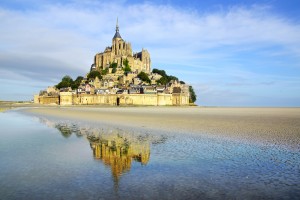
The story of the Archangel burning holes in Bishops made him fairly infamous which lead to all sorts of pilgrims making their way to pay homage at this new religious site. To cater to the crowds, a small town developed during the eighth century with a full-blown monastery to boot. The town was built to along the lines of feudal society rules, i.e. at the top was the abbey and monastery to pray to God, below this the Great Halls, stores and housing and at the bottom outside the walls fishermen and farmers’ housing.
Mont St Michel hit the headlines again in the Bayeux Tapestry when William ‘Long Sword’ took over the area, shortly before conquering England. Harold is pictured on the tapestry rescuing two Norman knights from the quicksand in the tidal flats during a battle with the Duke of Brittany.
In 1067 the monastery of Mont Saint-Michel gave it’s support to Duke William of Normandy in his claim to the throne of England and the monastery was rewarded with gifts from English side of the Channel, including a small island off the south-west coast of Cornwall. This island was modelled after the Mont and became a Norman priory named St Michael’s Mount of Penzance.
The Mont grew in reputation and because of its unique position of being an island only 600 metres from land this position made it readily defensible as an incoming tide stranded and occasionally drowned any would-be assailants. The Mont remained unconquered during the 100 years war and this resolute resistance inspired the French, especially Joan of Arc.
There was a minor blip in the Mont’s history when it was turned into a state prison by Louis XI, however by 1836 influential figures—including Victor Hugo—had launched a campaign to restore what was seen as a national architectural treasure. The prison was finally closed in 1863, and the mount was declared an historic monument in 1874.
Mont Saint-Michel and its bay were finally added to the UNESCO list of World Heritage Sites in 1979 and is one of the most popular tourist attractions in the world.
Not bad work from Bishop Aubert. He would probably now say that it was almost worth the hole in the skull.
Find out more about our Gites in Normandy
Cool accommodation for family holidays in France
If you are looking for cool accommodation to wow your kids, we really like these quirky ideas from La Flèche and Glisten Camping.
A night at the zoo in La Flèche
La Flèche Zoo, which is located in the Loir Valley between Le Mans, Angers and Tours, has launched three new, super-stylish safari-style lodges for night time stays at the zoo.
The new lodges overlook the Madagascan lemurs, and are added to four existing lodges which allow visitors to enjoy the company from arctic wolves, white tigers or leaping lemurs.
Each lodge has oversized windows that look out onto the enclosures and so give visitors amazing views of the nocturnal habits of these amazing animals.
Accommodation includes a master suite, children’s bunk room, bathroom and outdoor shower and a Pergola for al fresco dining.
One night half board start from £110pp based on 4 sharing, including a 2-day zoo pass. Go to www.safari-lodge.fr to book.
Dome tents
Glisten Camping is opening in April Set to give France a new offering in luxe camping.
The company is offering amazing dome tents on handpicked campsites – the first site consists of six stylish geodomes nestled in the Basque countryside.
Glisten offers contemporary glamping alternatives for families who would rather curl up in a sleeping pod; swing in a hanging chair or whizz-up something magnificent on their own all-weather kitchen/dining area complete Plancha grill.
Think private pods, family living and fresh look at how to holiday outdoors in style.
For more information go to: www.glistencamping.com.
New family adventure company launches
From bivouac-ing to bread-making, a new family adventure company is offering breathtaking breaks to France this summer.
Family Adventure Holidays has launched three action-packed summer holidays based in different regions of France, with high-adrenaline thrills offering something for everyone from tots to teens – and their parents.
Families can choose between a fun-packed, all-inclusive holiday based at a chateau in Normandy; a high-octane watersports holiday on the Mediterranean coast; or a week’s adventure in the Ardeche where the highlight is the thrilling descent of the Ardeche gorge by canoe.
All activities are led by professionally-qualified English-speaking instructors and holidays also include outings and evening entertainment with camp fires, quizzes and barbecues.
Normandy Adventure
For families with younger children, the Normandy Adventure Holiday is at a 200-year-old chateau near Avranches, with more than 20 activities for all ages – from canoeing and climbing to biking and bread-making – plus accommodation, all meals and drinks.
Watersports on the Med
Based at a four-star family-run campsite at Argeles sur Mer on the Mediterranean coast, the French Mediterranean Watersports holiday features windsurfing, sailing, kayaking, whitewater rafting, canyoning, snorkelling and paddle-boarding. Back on dry land there are beach activities, plus mountain treks and wine tours for the grown-ups.
Canoeing on the Ardeche
For real adrenaline-junkies the Ardeche Adventure for families with children aged eight years and over promises a thrilling two-day whitewater canoe descent of the Ardeche gorge, with an overnight bivouac in the heart of the gorge. Also on the activity menu are kayaking, climbing, abseiling, weaselling in the limestone cliffs, and a high ropes course among the pine forests of Villefort.
Prices (excluding travel) start at just £295 per adult and £245 per child for seven nights’ full board with all activities. For more information go to www.familyadventureholidays.com.
Brittany Ferries launches new low cost service to France
Brittany Ferries has announced plans to launch a new low cost ferry service from Portsmouth to Le Havre on France’s north coast.
The service launches on 25 March and will be branded as Brittany Ferries économie, to appeal to those looking for cheaper crossings without the cruise-style experience normally provided by Brittany Ferries.
One way fares for a car plus two this spring will start at just £79 to France.
Services on board will be restricted from usual levels and will include a reduced restaurant menu and entertainment limited to a movie lounge, however cabins will still feature en-suite facilities, there will be a lounge where seats can be reserved on overnight crossings and there will be 12 pet-friendly cabins.
Mike Bevens, Group Commercial Director, comments: “We feel that there is an opening for a no-frills, great-value service which will appeal to those who are on a tight budget and may not have even considered travelling by ferry before. The Brittany Ferries promise has always been about “choice” – we have ten routes, plus high-speed services, as well as cruise ferries – and this is taking the concept one step further.
“Whilst Brittany Ferries économie will not provide the same high level of service and facilities with which Brittany Ferries has become associated it will offer something altogether simpler and with exceptional value.”
Bookings will open online at www.brittanyferries.com/economie in a few weeks but in the meantime registrations can be made by calling 0871 244 1400.
Discover secret Paris with these child friendly tours
City tours can sometimes be boring for children, so we love the idea of the ‘Secret Paris: Cheese, Art & Local Life‘ tour from Urban Adventures.
The tour brings the city to life and is suitable for families with children aged six and over, as well as solo travellers and couples. The passionate local guide will help you and your kids get under the skin of Paris and know it like a local.
Highlights of the Secret Paris tour include savouring a macaroon at a popular Parisian food shop, exploring the elegant surroundings of the Louvre’s garden, admiring medieval and renaissance-era architecture in Le Marais, becoming a cheese connoisseur at a Parisian fromagerie, window-shopping at quirky boutiques, enjoying a panoramic view over Paris, and experiencing the bustle of a busy French market.The tour is led by an English-speaking local, departs daily (except Sundays) from 9am and the maximum group size is 12 people, so it offers more interaction and a more personal experience than on most tours.
Urban Adventures’ unique tour last 3 hours and costs from around £45 per person. Tours can be booked at www.urbanadventures.com.
New family friendly ski accommodation
If you are planning a late-season ski holiday, we like the look of these new child-friendly chalets and hotels.
Nine & Tenne has created a brand new luxury chalet in Chatel in the French Alps (just 90 minutes from Geneva airport).
The chalet has been built with families in mind and features an indoor heated pool and family bedrooms with unique kids sleeping dens.
Their five-star service includes private airport transfers with car seats for all ages, gourmet meals for the adults with award winning French wines, plus special homemade kids teas.
Ski instructors work with children from three-years old, and they offer babysitting for little ones so that parents can enjoy their time on the slopes.
Find out more at www.nine-tenne.com.
Le Cocoon Hotel is one of the few new four star hotels in the the Tarentaise Valley in the resort of La Plagne (the hotel is just 40 metres from the chairlift in Plagne 1800). The hotel sits in the middle of the huge Paradiski area with access to 425km of slopes.
The stone and wood hotel has seven bedrooms, including a mezzanine floor with two beds upstairs. There’s also a sauna and outside jacuzzi, and there are shops, ski schools, hire shops, restaurants and bars nearby.
There is a bed and breakfast service, or you can reserve a traditional Savoyard dinner – a speciality of the region.
More details at www.hotel-lecocoon.fr.
Find out much more about skiing with the family in our dedicated section.
NAUSICAA dives in to 2014
Explore the might of oceans, come face-to-face with sharks and dive into the world of plankton following the launch of a new programme of thrilling events at NAUSICAA aquarium and marine centre in Boulogne-sur-mer in 2014.
The centre, which is home to 36,000 fish and is one of the biggest attractions in the north of France, is a firm favourite with the team at France For Families.
Here’s our pick of NAUSICAA’s most exciting events in 2014.
17-21 April: 23rd Festival of Sea Imagery
This exhibition of contemporary underwater photos shows the richness of the ocean environment and helps visitors understand the importance of preserving it.
21-25 May: Festival of Nature
Now in its 8th year, the Festival of Nature is dedicated to “Wild grasses, young shoots and the experience of maturity”.
8 June: World Oceans Day
World Oceans Day is a festival of the sea aimed at increasing public awareness of the marine environment. NAUSICAA is a founder member and arranges a whole programme of events to celebrate.
26 June: Launch of the Thalassa oceanographic research vessel
NAUSICAA is opening a new area dedicated to oceanographic research where visitors can embark aboard the oceanographic vessel ‘Thalassa’ to experience the thrills of a scientific voyage.
Throughout 2014: Islands Stories
This timely exhibition illustrates the various problems facing small islands across the world by telling the stories of their inhabitants, their concerns and hopes. The story takes visitors to faraway places, with remarkable animals and multimedia animations displayed in a setting that is fun, spectacular and educational.
Need accommodation in Pas de Calais? Search our gite pages.
Family friendly events and festivals in Brittany in 2014
There are lots of family friendly festivals and fascinating events taking place across Brittany 2014. These are great if you want to experience something that is totally unique to the region. Here are some of the events we are most looking forward to in 2014. If you need accommodation, search our gites in Brittany.
Fête de la Coquille Saint-Jacques
Where: Saint-Quay-Portrieux
When: 12-13 April 2014
Scallops from the St-Brieuc bay are renowned as some of the best in the world, and so every year the local villages get together to host a festival to mark the end of the scallop-fishing season. Visitors can find out more about the lives of the fisherman, take a fishing rip with one of the crews, and taste lots of delicious fresh scallops. On Saturday morning the ‘Knights of the Scallop’ parade through the streets, with street entertainment, concerts and brass bands taking over afterwards.
Find out more at: www.saintquayportrieux.com, or watch this short film from the 2011 event which was held in Erquy:
Spi Ouest-France Intermarché
Where: La Trinité-sur-Mer
When: 17-21 April 2014
This sailing regatta features the largest gathering of yachts in Europe, with more than 400 yachts lined up and ready to race in Quiberon Bay.
Find out more at: www.spi-ouestfrance.com, or watch this film from the 2012 event:
Festival of Brittany
Where: Across Brittany
When: 15-18 May 2014
The Fete de la Bretagne is a series of events that take place across the region to celebrate the vitality and spirit of Breton culture. There are hundreds of concerts, exhibitions, feasts and markets, and around 170,000 people attend. Keep an eye out for posters, flyers and banners to find out what’s taking place nearby during your holiday.
Find out more at: www.fetedelabretagne.com
Fête des Remparts
Where: Dinan
When: 19-20 July 2014
Dinan goes back to its medieval past with jousting, markets, open-air dances, a great parade, shows and events. The locals get stuck in to, donning medieval garb to give an extra taste of authenticity to the celebrations.
Find out more: www.fete-remparts-dinan.com or watch this video:
Fêtes Historiques de Vannes
Where: Vannes
When: 26-27 July 2014
The capital of Morbihan celebrates its history with a weekend festival including jousting, street theatre and concerts. This is a great time to explore the medieval town of Vannes, which has more than 250 buildings that are classified as historical monuments.
To find out more: www.mairie-vannes.fr
Festival de Cornouaille
Where: Quimper
When: 22-27 July 2014
This celebration of Celtic culture has been taking place for almost 90 years. Quimper’s historic town centre is transformed as more than 250,000 people come to see the shows, concerts – there has been everything from bagpipe playing to Simple Minds – and a giant parade where everyone dresses up in traditional Breton costumes.
Find out more at: www.festival-cornouaille.com
Lorient Celtic Festival
Where: Lorient
When: 1-10 August 2014
Every summer around 700,000 people descend on Lorient to take part in the town’s famous Celtic festival. There are around 200 events taking place with about 5,000 performers – the atmosphere is truly amazing.
More information: www.festival-interceltique.com or have a listen to the sounds of the festival with this video:
Les Filets Bleus
Where: Concarneau
When: 14-17 August 2014
The festival is so called because when it first started, more than 100 years ago, the quays of Concarneau were covered in blue sardine-fishing nets. Highlights include a parade with everyone dressed up in traditional costumes, Breton dance and Gouren, which is a style of Breton wrestling.
Further details from: www.festivaldesfiletsbleus.fr
Do you know of more events we should include here? Tell us by adding a comment.
Brittany’s Emerald Coast is a family holiday gem
Are on the lookout for a great family holiday? We chatted to Lesley Willis about Brittany’s Emerald Coast and her selection of amazing child-friendly gites in Hénansal near St Malo.
Says Leslie: “We were first attracted to Brittany because it wasn’t too hot but was warmer than the UK, was quite close to all the ports and once we visited it, we fell in love with the countryside and the coast – the beaches near us are hidden gems and deserve the Emerald Coast nickname!
“We have 7 properties that we rent as holiday cottages. Originally La Touche was a working farm but the owners retired and sold up. They still live nearby and love what we have done with the place.
“We spent two years renovating the farm buildings, trying to keep as many original features as we could whilst making sure they were modern and comfortable. We wanted to create a place that families would love – modern and safe cottages but with lots of facilities for the little ones. After all, if the children are happy then the parents are normally happy.
Food and drink
“Each gite is a little different, but what makes our site special is the bar. Ours really is a very social place where families can meet other families and they can socialise together.
“We also offer catering options so parents really have the chance to relax and feel like they are on holiday too.
Emerald coast
“The beaches are definitely the highlight of the local area, however there are also the towns of St Malo and Dinan nearby, an aquarium, zoo, chateaux and amusement parks. There is beautiful countryside, walks galore and of course fabulous French markets every day of the week if you want.
“One of our favourite local attractions is Fort La Latte. It is an old mediaeval fort that juts out into the sea at Cap Frehel which is a beautiful coastal area. The views are magnificent and children and adults love the place. A couple of times a year there is a medieval festival held at the Fort which is brilliant fun.
“In 2014 we are just looking forward to another good year. Hopefully the weather will be as good as last year and we will have lots of happy families and lots of happy children. I love hearing all the children laughing and enjoying themselves in the gardens, it is lovely to see.”
Click here to find out more about Lesley’s Emerald Coast gites in Brittany.
The Mont St Michel Story
At the request of the Archangel Michael (the archangel who mythically fought evil on dramatic hill-tops) and had its origins in 7th century Ireland), Bishop of Avranches built a church on the island in 709. In 966, at the request of the Duke of Normandy, a community of Benedictine Monks settled on the rock. As the centuries past, the humble church was developed into what is known today as the Romanesque abbey church.
The Abbey was built in the 11th century on a set of crypts at the tip of the rock and were the first monastic buildings to be built up against its north wall. The monastery buildings were extended in the 12th century to the west and south of the rocky island.
Mont Saint Michel is a World Heritage Site that attracts millions of visitors every year, for more on its history and when you can visit, please see http://www.ot-montsaintmichel.com/en/histoire.htm
Incidently, Mont Saint Michel has a story that runs pre 709 and its connection with St Michael’s Mount in Cornwall is certainly of interest. Christopher Long, a British journalist, takes up the story in more detail here http://www.christopherlong.co.uk/oth/msm-smm.html
Consider Lot-et-Garonne for a Holiday in 2014
Lot et Garonne a little know department within the Aquitaine region in South West France offers an huge array of activities, attractions and places to stay for the discerning family.
Here are our six reasons to visit Lot et Garonne… starting with Number 1.
1. Drive your own cruise boat
The Lot is navigable for around 150km, mostly through the departments of Lot and Lot-et-Garonne. Hire a self-drive river cruiser from Bouzies, east of Cahors – no experience necessary and full tuition given – to enjoy playing admiral for a few hours. There’s no nicer way to get close to the wildlife along the river and soak up the atmosphere of historic villages such as St Cirq-Lapopie, voted favourite village in France by the French. Or take a guided river excursion with commentary to learn about the history and traditions of the area.
Read the other 5 reasons here… https://www.franceforfamilies.com/france/lot-et-garonne
Stocking up for Christmas?
Thinking of heading to France to stock up for Christmas?
Ensure you prepare your car appropriately, read our advice here https://www.franceforfamilies.com/travel-options/driving/preparing-your-car
Les Gets Ski Resort Factfile
Les Gets factfile:
- Resort height: 1172m – 2002m
- Access: Easy access from Geneva via A40 to Cluses, then D902 to Les Gets.
- Downhill runs: Mainly blues and reds – good for families.
- Size of domaine: 650km including Portes du Soleil.
- Lifts: Too many to number!
- Lift Pass: around €163* per adult, and €126 child for a 6 day pass (note that children are 15 and under). 10% discount for families. Portes du Soleil passes more expensive.
Read more about why you should consider Les Gets from your Family Ski Break this Winter https://www.franceforfamilies.com/skiing-holidays/les-gets
Skiing 2013/14: Our Guide to Flights
Our guide to flights from UK airports to French Ski resorts is out now… Check out our full guide here https://www.franceforfamilies.com/skiing-holidays/ski-flight-guide
New Morzine ski lift gets ready for take off
Gareth Marshall at Simply Morzine has been keeping us posted on the development of the brand spanking new 10 million euro Plenéy ski lift that will be ready in mid December for Morzine’s winter season.
The lift goes from central Morzine to Le Pléney and will almost double the transport capacity of the system, putting Morzine firmly on the map as having one of the best ski lift infrastructures in Europe.
The development, replacing a system that has run since the 1960s, will have 54 gondola cabins that can each accommodate up to 10 people, transporting up to 3000 skiers an hour and so massively improving the capacity and travel time to the ski area.
Access to the lift stations will be made quicker and easier and skiers will have more direct access to the slopes.
Of course, the lift comes in handy during the spring, summer and autumn season too, when the area is outstanding for walkers and mountain bikers – the lift will go some way to making their journeys easier!
Says Gareth: “It has been an amazing project to watch since it first started in May 2013. Think incredible engineering, helicopters dropping concrete to make pylons – all quite dramatic.”
Morzine is a traditional alpine village Morzine and ski centre in the Portes du Soleil region of the French Savoie Alps, between Lake Geneva and Mont Blanc on the French-Swiss border, and just 75km from Geneva airport.
Simply Morzine is a collection of luxury catered chalets, self-catered apartments and a family-run chalet-hotel for winter skiing and summer alpine holidays. See the site at www.simply-morzine.co.uk.
Love ‘The Tunnel’ on Sky? Here are 10 Channel Tunnel facts
The Channel Tunnel is taking a starring role in Sky Atlantic’s newest grisly murder mystery, ‘The Tunnel’ which starts on Wednesday 16 October, so we have delved into some of the amazing facts that make the crossing from the UK to France so special.
- The Tunnel is 31.4 miles long from Folkestone in Kent to Coquelles in Pas de Calais. With 24 miles underwater, this is the longest sea tunnel in the world.
- At its deepest point, the tunnel is 75metres under water.
- It takes 35 minutes for trains to cross the tunnel. Services include Eurostar trains, Eurotunnel car-carrying shuttles and freight trains.
- Around 320m people have used the tunnel since it opened.
- There are actually three tunnels: two for trains and one service tunnel.
- Work began in 1988 and the first shuttle to carry a car crossed in 1994. The decision to build the tunnel was first announced almost 50 years ago, on 6 February 1964.
- 11 massive boring drills were used to dig out the tunnel and more than 13,000 workers took part in the construction.
- The waste removed during construction of the tunnels was used to create a new piece of land on the Kent coast. Samphire Hoe is an award-winning 90 acre nature reserve that with stunning views of the Dover cliffs.
- Despite the gory premise of The Tunnel, there have been no recorded murders in the Channel Tunnel.
- Engineers voted the Channel Tunnel the best construction achievement of the 20th century.
Find out more about Sky’s The Tunnel.
Easyjet announces low cost flights to France for summer 2014
Easyjet has announced its 2014 summer schedule, so to give you a headstart for booking the bargains, we have rounded up the best prices for flights to France for the May half term and summer school holiday dates in 2014.
If you find better deals please tell us in the comments below.
All of the following are based on travel from London airports and for a seven-night break (unless stated), and can be found at the easyjet website (www.easyjet.com). Of course, prices vary, so please check the latest price with easyjet before making any plans.
To book great value accommodation, go to www.franceforfamilies.com/gites
Cheapest Easyjet flights to France for the May half term holidays in 2014
London to Paris Charles de Gaulle
Depart, Saturday 24 May (from £35pp)
Return, Saturday 31 May (from £62pp)
London to Nantes, for Brittany and the Vendée
Depart, Sunday 25 May (from £55pp)
Return, Sunday 1 June (from £81pp)
London to La Rochelle, on the west coast
No flights available at this time
London to Montpellier, for Languedoc on the south coast
Depart, Saturday 24 May (from £70pp)
Return, Saturday 31 May (from £95pp)
London to Bordeaux, in south west France
Depart, Saturday 24 May (from £66pp)
Return, Saturday 31 May (from £54pp)
London to Nice, for the Cote d’Azur
Depart, Saturday 24 May (from £104pp)
Return, Saturday 31 May (from £78pp)
Cheapest Easyjet flights to France for the start of the summer in 2014
London to Paris Charles de Gaulle
Depart, Thursday 25 July (from £43)
Return, Thursday 1 August (from £46)
London to Nantes, for Brittany and the Vendée
Depart, Thursday 25 July (from £72)
Return, Thursday 1 August (from £57)
London to La Rochelle, on the west coast
Depart, Saturday 27 July (from £49)
Return, Saturday 3 August (from £44)
London to Montpellier, for Languedoc on the south coast
Depart, Thursday 25 July (from £80)
Return, Thursday 1 August (from £51)
London to Bordeaux, in south west France
Depart, Friday 26 July (from £111)
Return, Friday 2 August (from £66)
London to Nice, for the Cote d’Azur
Depart, Saturday 27 July (from £84)
Return ,Thursday 1 August (from £50)
Cheapest Easyjet flights to France for the last week in August in 2014
London to Paris Charles de Gaulle
Depart, Saturday 23 August (from £43pp)
Return, Saturday 30 August (from £41pp)
London to Nantes, for Brittany and the Vendée
Depart, Saturday 23 August (from £92pp)
Return, Saturday 30 August (from £87pp)
London to La Rochelle, on the west coast
Depart, Sunday 24 August (from £41pp)
Return, Sunday 31 August (from £73pp)
London to Montpellier, for Languedoc on the south coast
Depart, Sunday 24 August (from £43pp)
Return, Sunday 31 August (from £113pp)
London to Bordeaux, in south west France
Depart, Sunday 24 August (from £45pp)
Return, Friday 29 August (from £85pp)
London to Nice, for the Cote d’Azur
Depart, Sunday 24 August (from £48pp)
Return, Friday 29 August (from £130pp)
For a huge choice of gites and apartments in all of these regions, head over to our accommodation section and search by region: www.franceforfamilies.com/gites.
Watersports in the Alps: rafting and hydrospeed
Not something we normally associate with the Alps, but the variety of rivers and lakes in the mountains ensure there’s always fun to be had splashing about in water.
Something to try when the rivers in the Alps are full of life between May and October is ‘Rafting’ and ‘Hydrospeed’. To do both you generally need to be confident swimmers and not afraid of the rapids! Most companies insist on being over 14 years old.
Rafting is done on very durable rubber dinghies normally with around eight people to a boat. Everyone has a paddle and they have to use it! It’s all pull together, particularly when negotiating the swift moving water of the rapids.
The ‘Hydrospeed’ adds what I think is the extra element of danger. Armed with just a bodyboard and flippers, you are heading down the river ‘tout seul’ – just you with your face inches above the water line, swimming swiftly past the rocks and gasping for air as the water dramatically carries you downstream.
You generally don’t need any pre-training or experience before trying out these activities. The instructors will spend time at the beginning explaining the equipment, demonstrating how to paddle, lean, turn and flip! The instructors can certainly add to the experience, guiding the way but also adding an element of fun to the experience – they can make it a real event to remember!
Over the summer the boys in our party (Dad, aged 40 something and Son aged 15) experienced both with An Rafting (www.an-rafting.com) on the Isere River, between Aime and Centron, in the Alps Savoie. Highly recommended!
For somewhere to stay, head over to our list of fabulous gites in the Alps.
Normandy gites close to World War II museums, memorials and attractions
If you are planning to visit Normandy’s Second World War attractions, staying in a gite can be better value, more fun and more authentic than a hotel room or campsite.
France For Families features a wide array of gites close to World War II museums, memorials and landing beaches across Normandy, covering everything from revamped farmhouses to stylish cottages.
This is our guide to the most important of Normandy’s Second World War attractions.
American Cemetery at Omaha Beach
This is the largest Allied cemetery in Normandy with 9,387 graves on a 170 acre site. The cemetery overlooks Omaha Beach where so many Americans lost their lives. It is beautifully maintained and a visit here is a very moving experience. There is also an impressive Visitor Centre with a fascinating museum packed full of facts and newsreel items.
Caen Memorial
A museum for Peace that gives an overall history of war from 1918 to the present day. The Caen Memorial is split into many different sections, starting with a journey into history in the aftermath of WWI and then moving on to various aspects of WWII, including the French Resistance and D-Day. The attention to detail in the exhibits and the layout of the museum is first class.
Pegasus Bridge
Discover the full story behind the famous glider attack on Pegasus Bridge, one of the two bridges spanning the Orne River and canal. The small museum is very informative and has a film show (available in English – do ask) that gives an excellent overview of the events. Outside in the grounds you can visit the original Pegasus Bridge (which has been replaced across the river with a new bridge) and an actual size model of a glider from the war period.
Pointe du Hoc
Considered by the allied invasion forces to be of crucial importance on D-Day, this huge series of German gun emplacements and interconnecting bunkers was situated on a prominent headland between Utah and Omaha beaches on the Normandy coast. Today as you wander the picturesque setting with its beautiful far-reaching views, it is hard to imagine the scenes of over 60 years ago. It is still possible today to go inside the bunkers as well as viewing the former gun sites.
Atlantic Wall Museum
This private museum, hidden away in the middle of a residential area, tells the story of the imposing concrete bunker with commanding views along the coast – a target that was of extreme importance to the allies. The many floors have lots of showcases full of information and mock up rooms. A ladder attached to an interior wall leads up to the roof for great views, and outside are WWII vehicles, including a reconstructed landing craft that featured in the film ‘Saving Private Ryan’.
Arromanches 360
Built to commemorate the 50th anniversary of D-Day, this circular theatre of nine standing-room-only screens shows the poignant film ‘The Price of Freedom’. This film mixes news-reel images and archive material from war correspondents with modern day pictures. There is no spoken commentary, simply the sounds and noises of the D-Day sections and music covering the modern sequences.
Canadian Museum
Located on the edge of Juno Beach, the museum marks the site of the D-Day landings by Canadian soldiers. Exhibits cover not only the landings themselves but they also give an insight into Canadian culture and life, both past and present.
Merville-Franceville Battery
This small museum is a former German Battery built as part of Germany’s Atlantic Wall defences. There are several casements on the site but only one can be visited and this is where the main museum exhibits can be found.
For accommodation, search our list of gites close to World War II museums and attractions.
Summer holidays in the French Alps
Most families tend to head to the coast for their sunshine holidays and leave the mountains for winter snow, but summer holidays in the French Alps ticks many of the boxes for a great family holiday, without the problems faced by families staying in packed resorts.
We think there are three main reasons to consider the Alps for a summer holiday:
- They are considerably cheaper than the coast
- The Alps is much quieter
- You’ll find loads of fun activities
So why at the Alps cheaper than the coast?
It’s all to do with the cost of accommodation. Because this area is better known for being a ski resort, there’s a glut of accommodation that’s never full in the summer months.
You can pick up an apartment from as little as a couple of hundred pounds per week in the school summer holidays – compare that with a beach family holiday where normally you wouldn’t get much change from a thousand pounds.
How about the traffic?
The traditional exodus to the coast doesn’t affect the Alps. Roads remain quiet over the summer months, driving becomes a pleasure and you can explore the mountain roads at your leisure, without the fear of being stuck in traffic down to the beach, or back again at the end of the day.
And what is there to do?
For those of you who can’t bear the idea of missing out on swimming, the mountain resorts tend to be well-equipped with either pool complexes or lakes you can swim in.
You’ll see signs for ‘Base de Loisirs’ where there’s often many activities on offer, from swimming, tree-top adventure climbing, river rafting and play-grounds for children.
For the more adventurous there are the more challenging activities. Try climbing, abseiling, mountain biking, parascending or via ferrata.
A via ferrata (Italian for “iron road”) is a climbing route in the mountains where climbers secure themselves to cables or iron rungs to help them reach high peaks. The origins of via ferrata date back to the nineteenth century, but via ferratas are strongly associated with the First World War, when several were built in the Dolomite mountain region of Italy to aid the movement of troops. More on via ferrata to follow when our own intrepid mountaineer tries it for the first time this summer…
Where to stay?
Here are three summer holiday options on our website, FranceforFamilies.com.
Chalet La Giettaz is located in the picturesque Savoyard village of La Giettaz, surrounded by fabulous Alpine scenery: a wonderful location for year-round holidays with family and friends. In summer, the area offers many opportunities for walking, cycling, mountain biking and other outdoor activities, or simply relaxing in the beautiful surroundings.
Simply Morzine offers summer family activity holidays with renowned alpine family specialists. You can choose from a variety of catered and self-catered accommodation including family-run French hotels, private luxury chalets and apartments perfect for a family. There is a superb programme of activities for all ages and interests, from toddlers to teenagers and dads to grandads! Catered bookings include free activities.
Chez Pascal is a luxury chalet in Morzine, French Alps. It’s great for summer family activity holidays and the chalet offers an outdoor terrace and games area with spectacular views.
So, are you up for trying something different? We can recommend it!
La Palmyre Zoo, in Charente Maritime
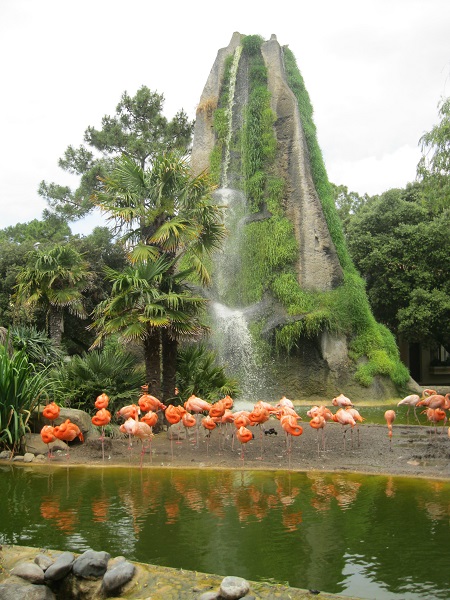 A trip to the zoo might not be top of your to-do-list on holiday in France, but for a cloudy day or as an alternative to the beach, we rate La Palmyre Zoo as a great choice for entertaining the kids.
A trip to the zoo might not be top of your to-do-list on holiday in France, but for a cloudy day or as an alternative to the beach, we rate La Palmyre Zoo as a great choice for entertaining the kids.
On the approach to the zoo you’ll see cars already filling the parking bays along the road and pulling up onto the grass verges to find their own spaces, yet this desperation to park right outside the zoo gates is misplaced as there are actually two large car parks to choose from at either end of the zoo, and both are free and within a short walk of the entrance.
For parents, we felt the car parks were a better bet than the on-road parking which required families to head across a busy road to get from car to zoo – not the safest of short journeys.
Entry tickets can be bought from the two booths outside the gates but at busy times in the summer we can imagine this might mean a fairly long wait, so if you can buy your tickets in advance do so, and head straight to the entry gate to go in.
The first sight you’ll see is a mass of pink flamingos standing one-legged underneath a waterfall spray or cooling themselves on sodden mounds of mud, and you’ll hear the squawks and calls of an army of animals in the distance. Although we could never quite put our finger on where all the noises were coming from, we later spotted a peacock at the top of a tall tree crawing to his heart’s content, and tactfully positioned speakers seemed to be the source of many of the other sounds.
As you move on you’ll see signs with Sens de la Visit nudging you in a route around the zoo and we found these helped to get the most from our tour, stopping the inevitable double-backs and repeat visits you’ll experience if you try to find your own way around (we speak from experience).
Feeding time at the zoo
One of the peculiarities of La Palmyre Zoo is how many times you are encouraged (or allowed) to feed, touch and stroke the animals. One of the first attractions you’ll come across is the giraffe enclosure, which has a feeding platform that brings you up to eye level with the giraffe’s who bumble across the grab tasty treat of popcorn.
This idea was repeated numerous times, with children taking delight in feeding and stroking zebras; holding out handfuls of popcorn for the elephants with trunks long enough to reach across the divide from their pen to the path to hoover up the food and bring it back to their massive mouths; turtles who ambled slowly across their patch of grass as little ones leaned over to pat their shells, and a herd of goats who came rushing over every time a parent and child clambered over the ladder and into their huge pen with armfuls of food – although the sensation of 30 or so ravenous goats was too much for many of the smallest children who seem terrified and let out lots of screams and tears until they were carried back to safety.
While the experience of being close enough to feed the animals felt slightly invasive, some of the other settings were totally first class.
Monkey island
Chimpanzees, orang-utans and gorillas had their own islands with elaborate climbing frames and hideaways, all set against the backdrop of crashing waterfalls. As we walked past their islands settings we were directed into a modern building that acted as their second home, with more climbing trees, hammocks and nooks for the animals to explore.
Similarly, various species of gibbons were given large island homes where they could swing and play in happiness, and their mischevious sense of fun gave the impression that they were happy with their lot.
We can’t help but feel that zoos always seem to struggle with how best to house big animals and those that explore far and wide, and we felt the same way at La Palmyre. It was sad to see the big cats – the lions, a lynx and the cheetahs – fenced in and with a constant audience.
However, much of the delight from a visit to La Palmyre Zoo comes from how close you can get to the animals and the zoo boasts a superb conservation record, so we felt sure that the best interests of the animals were always put first.
The zoo is small enough to walk round with small children – our visit lasted four hours with several refreshment stops, and there was always something new and exciting around every corner.
Price guide
We took our own picnic to keep costs down and there were plenty of shady spaces to enjoy our food, but we were also pleasantly surprised with the price of refreshments inside the zoo – two-flavour ice creams cost 1.50€, sandwiches and bowls of crisps cost 2€ each, and pizzas were 4€.
Entry to the zoo is 15€ for adults and 11€ for children aged from 3 to 12, which we reckon is great value as you can easily spend the best part of the day here, especially when you factor in stops from the sealion and bird shows that take place throughout the day.
Sounds inspiring? Find out more about our gites in Charente Maritime.
Breathalysers ditched for travellers to France
Holidaymakers driving to France no longer need to include breathalyser test kits as part of their travel pack.
The breathalyser law was only introduced in July 2012, but has already been suspended as doubts have been raised about the reliability and impact of the kits.
Fines for not carrying the breathalyser kits were set at just 11€ when the regulation was launched so that those unaware of the change or unable to buy kits which were initially in poor supply would not be unfairly penalised, however the Interior Minister responsible now says the fine is too low to help stop drink driving.
So while breathalyser test kits are readily available and cheap to buy (from as little as £2), you won’t be fined for not having one in your driving kit.
Another road safety reversal for holidaymakers to be aware of is the reintroduction of road signs warning of speed cameras, which were replaced in 2011 for digital displays that alerted motorists to their speed.
The high-tec radars have been deemed too confusing for motorists – something I can agree! When I first came across the signs I spent all my time checking the digital display against my car’s speedometer – all completely distracting to the job of driving!
Find out lots more about driving in France.
La Rochelle: France old and new
La Rochelle is a stunning town on the Charente Maritime coast, stylishly combining historic buildings with striking modernity; a great place for a day’s mooching, but does it come up to the mark for children?
As we drove into the town and made our way into one of the well signposted car parks, the site of a two-storey carousel showed us that La Rochelle was about more than boutique shops and snazzy cafés.
We parked (just 4.80€ for the day) and walked into the town, following the signs to the tourist information to get our bearings, but catching glimpses of eye-catching houses which lined narrow streets, and impressive churches and turrets that towered over the skyline.
Our first stop (with still no sign of the tourist office) was a café looking out to the typically beautiful Hotel du Ville, whose good looks shone through despite the attentions of scaffold and netting in place for renovation works.
After a formule du jour of salmon starter and a mixed grill brochette (11.50€ each) we continued on in search of the tourist office, which suddenly loomed into view as we exited the narrow street scenes and hit the seafront quays area that had been stylishly redeveloped to feature an ultra-modern aquarium and a collection of prettily coloured wooden buildings that were home to more shops, bars and restaurants and (at last!) the tourist information office.
One of the most striking sights in the quays area was a giant ferries wheel which provides magnificent views of the town below.
Fishy business: La Rochelle Aquarium
After a quick search of tourist information on the town, we headed over to the aquarium and paid for our tickets (15€ for adults and 11€ for children aged 3 to 12).
Entry to the aquarium itself is through a lift designed as an ancient submersible which immediately sets the tone for the rest of our adventure – superbly designed, captivating for the kids and great fun.
When the doors opened at our drop off point, we were immediately greeted by the sight of huge, brightly lit tanks with magnified glass which meant we could see the fishy inhabitants in wonderful detail.
Every tank was an aquatic world for all sorts of weird and wonderful fish, with children – noses pressed against the glass and following the fish backwards and forwards – captivated by the goings on.
Throughout the aquarium there were lots of nice touches for kids – with hidey holes little ones could crawl into for an exclusive view of tanks, small amphitheatres where they could watch some of the biggest tanks in a cinematic experience, wave scenes projected onto the floors so we could walk over them, and even turtles allowed to crawl freely across walk ways.
Our aquarium tour lasted about 90 minutes, but could easily have been longer if our little one was older.
Tower power: La Rochelle’s three tours
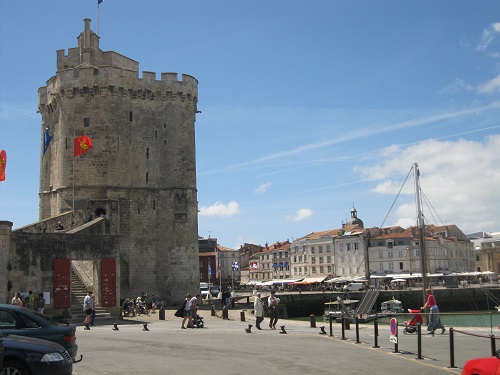 After leaving the aquarium we headed to seafront, where La Rochelle’s three famous towers watch over the town.
After leaving the aquarium we headed to seafront, where La Rochelle’s three famous towers watch over the town.
The towers provide the most iconic images of La Rochelle and played a key part in many of its most important periods of history – including a siege led by Cardinal Richelieu (yes, he of The Three Musketeers fame) acting under orders from the King of France.
Each of the towers can be toured (6.50€ for one tower, 8.50€ for entry to all three), however this activity will probably suit only the most adventurous, or history-minded of teens.
The tower interiors are made up of winding corridors, steep steps and roof walks that are open to the elements, so they’re not practical – or of much interest – to smaller children.
However if you do get the chance to visit inside (I toured St Nicholas tower while my wife and daughter explored the quays) then the history is fascinating and the interiors are superbly maintained. Visitors are given a large folder with information about each of the rooms they pass through, which makes it easy to close your eyes and imagine life in the tower as it was almost 500 years ago.
Our final stop of the day was at one of the booths serving delicious ice creams (2.50€ for a single scoop), before we weaved our way through busy streets and back to our car.
Inspired to visit for yourself? See our gites in Charente Maritime.
Bordeaux’s Miroir image
Our daughter loved running across the Miroir d’Eau, the giant water feature on the iconic Garonne riverfront in Bordeaux.
The Miroir is a large granite base which holds an inch or so of water for most of the time, reflecting the magnificent frontage of the Bourse (the old financial centre), and looking out onto the mighty Garonne and the Pont Neuf – a bridge built by Napoleon to ferry his troops across the river.
On a hot day a paddle across the Miroir is so refreshing, with all comers slipping off their shoes and tip tapping across the clear water.
Yet every so often the water disappears and leaves the granite exposed – but the trick is to hang around for a few minutes as the Miroir drinks up the water and blows it back out in a fine spray that creates a pretty mist on the river banks – something the kids will love dashing through.
Want to know more? See our selection of gites in Aquitaine.

